- The Importance of School Facilities in Improving Student Outcomes
Introduction
A growing body of research has found that school facilities can have a profound impact on both teacher and student outcomes. With respect to teachers, school facilities affect teacher recruitment, retention, commitment, and effort. With respect to students, school facilities affect health, behavior, engagement, learning, and growth in achievement. Thus, researchers generally conclude that without adequate facilities and resources, it is extremely difficult to serve large numbers of children with complex needs.
According to the US General Accounting Office (GAO) almost three-fourths of existing US schools in 1996 was constructed before 1970. Of these schools, about one-third of schools had need of extensive repair or replacement and almost two-thirds had at least one inadequate building feature such as substandard plumbing, roofing, or electrical systems. Moreover, 58-percent had at least one unsatisfactory environmental condition such as inadequate ventilation, acoustics, or physical security.
Besides general maintenance and construction issues, researchers have found most schools lack 21st century facilities in the form of infrastructure, laboratories, and instructional space. More than half do not have sufficiently flexible instructional space for effective teaching to take place.
Thus, facility quality is an important predictor of teacher retention and student learning. The physical and emotional health of students and teachers depend on the quality of the physical location, which makes establishing safe, healthy buildings essential.
The Impact of Facilities
Improving the quality of school facilities is an expensive undertaking. However, when the positive impacts of facility improvement on teachers and students are translated into dollar figures, the rewards of such investments far outstrip the cost of the investments. There are five primary facets of school facilities: acoustics/noise, air quality, lighting, temperature, and space. These are addressed below.
Acoustics and Noise
Noise levels greatly affect teacher and student performance. In fact, excessive noise causes dis-satisfaction and stress in both teachers and students. Research has found that schools that have classrooms with less external noise are positively associated with greater student engagement and achievement compared to schools with classrooms that have noisier environments. Thus, building schools that buffer external noise from classrooms can improve student outcomes.
Air Quality
Indoor air quality is also a concern because poor air quality is a major contributor to absenteeism for students with asthma. Research also indicates that many schools suffer from “sick building syndrome” which affects the absenteeism and performance of all students. Moreover, bacteria, viruses, and allergens that contribute to childhood disease are commonly found in schools with poor ventilation systems.
Indoor pollutants are also emitted from office equipment, flooring materials, paints, adhesives, cleaning products, pesticides, and insects. All of these environmental hazards can negatively affect children, particularly in schools with poor ventilation systems.
Before the advent of cheap electricity, schools often relied on natural lighting. As electric power costs declined, the amount of artificial light used in schools increased. Research has shown that artificial lighting has negative impacts on those in schools while natural lighting has positive impacts. In fact, research has shown that not only does classroom lighting boost the morale of teachers and students, appropriate amounts of natural lighting also reduces off-task behavior and improves test scores. One study found that students with the most exposure to natural daylight progressed 20% faster in in math and 26% faster in reading than students who were taught in environments with the least amount of natural light.
Proper Temperature and Control of Temperature
One consistent research finding across individuals of all ages is that the temperature in which a person works affects engagement levels and overall productivity—including student achievement. Anyone that has worked in a classroom or office that is too hot or too cold knows how difficult it can be when trying to work when the temperature is uncomfortable. According to the best analyses, the ideal temperature range for effective learning in reading and mathematics is between 68º and 74º.
To maintain such a temperature in every classroom within a school, teachers typically need to be able to control the temperature in their own classroom. At the very least, teachers should be able to control the temperature of small blocks of classrooms that receive the same amount of sunlight and have similar exposures to outside temperatures.
Classroom Size and Space
Overcrowded classrooms—and schools—have consistently been linked to increased levels of aggression in students. Overcrowded classrooms are also associated with decreased levels of student engagement and, therefore, decreased levels of learning.
Alternatively, classrooms with ample space are more conducive to providing appropriate learning environments for students and associated with increased student engagement and learning. Classroom space is particularly relevant with the current emphasis on 21 st century learning such as ensuring students can work in teams, problem solve, and communicate effectively. Classrooms with adequate space to reconfigure seating arrangements facilitate the use of different teaching methods that are aligned to 21 st century skills. Creating private study areas as well as smaller learning centers reduces visual and auditory interruptions, and is positively related to student development and achievement.
Twenty-First Century Learning
Policymakers, educators, and business people are now focused on the need to ensure that students learn 21 st century skills such as teamwork, collaboration, effective communication, and other skills. As noted above, older buildings simply are not conducive to the teaching of 21 st century skills. This is particularly true with the respect to reconfiguring seating arrangements to facilitate various modes of teaching and learning and the use of technology in the classroom as a mode of teaching and learning.
Conclusions
A large body of research over the past century has consistently found that school facilities impact teaching and learning in profound ways. Yet state and local policymakers often overlook the impact facilities can play in improving outcomes for both teachers and students. While improving facilities comes at a financial cost, the benefits of such investments often surpass the initial fiscal costs. Policymakers, thus, should focus greater attention on the impacts of facilities and adopt a long-term cost-benefit perspective on efforts to improve school facilities.
Ayers, P.D. (1999). “Exploring the relationship between high school facilities and achievement of high school students in Georgia.” Uunpublished doctoral dissertation, University of Georgia,Athens, GA
Baron, R. A. (1972). Aggression as a function of ambient temperature and prior anger arousal. Journal of Personality and Social Psychology , 21 (2), 183.
Buckley, J., Schneider, M., & Shang, Y. (2004). The effects of school facility quality on teacher retention in urban school districts. Posted by the National Clearinghouse for Educational Facilities at: http://www.edfacilities.org;
Duncanson, E. (2003). Classroom space: right for adults but wrong for kids. Educational Facility Planner , 38 (1): 24-8
Fisk WJ. 2000. Estimates of potential nationwide productivity and health benefits from better indoor environments: an update. In: Indoor Air Quality Handbook , Spengler J, Samet JM, McCarthyJF, eds. New York: McGraw-Hill. pp 4.1-4.36.
General Accounting Office. (1996). School Facilities: America’s Schools Report Differing Conditions . Washington, DC: Author.
Hathaway, W.E. (1995). Effects of school lighting on physical development and school performance. The Journal of Educational Research . 88 : 228-42.
Haverinen‐Shaughnessy, U., Moschandreas, D. J., & Shaughnessy, R. J. (2011). Association between substandard classroom ventilation rates and students’ academic achievement. Indoor Air , 21 (2), 121-131.
Jones, S. E., Axelrad, R., & Wattigney, W. A. (2007). Healthy and safe school environment, part II, physical school environment: Results
from the school health policies and programs study 2006. Journal of School Health, 77 (1), 544-556.
Krüger, E. L., & Zannin, P. H. (2004). Acoustic, thermal and luminous comfort in classrooms. Building and Environment , 39 (9), 1055-1063.
Kuller, R. and Lindsten, C. (1992). Health and behavior of children in classrooms with and without windows”,Journal of Environmental Psychology, 12(3): 305-17.
McNall PE, Nevins RG. (1967). Comfort and academic achievement in an air-conditioned junior high school – a summary evaluation of the Pinellas County experiment. ASHRAE Transactions. Vol 73 (III), pp 3.1-3.17.
Mendell, M. J., & Heath, G. A. (2005). Do indoor pollutants and thermal conditions in schools influence student performance? A critical review of the literature. Indoor air , 15 (1), 27-52.
Moore, G. T., & Lackney, J. A. (1993). School design: Crisis, educational performance and design application. Children’s Environments , 10 (2), 1-22.
Mosteller, F. (1995). The Tennessee study of class size in the early school grades. Future of children , 5 , 113-127.
Ready, D., Lee, V., & Welner, K. (2004). Educational equity and school structure: School size, overcrowding, and schools-within-schools. The Teachers College Record , 106 (10), 1989-2014.
Rivera-Batiz, F. L., & Marti, L. (1995). A School System at Risk: A Study of the Consequences of Overcrowding in New York City Public Schools. IUME Research Report No. 95-1.
Sensharma N.P., Woods, J.E., Goodwin, A.K. (1998). Relationships between the indoor environment and productivity: A literature review. ASHRAE Transactions. 104 (part 1A): 686-701.
Tanner, C.K. (2000). The influence of school architecture on academic achievement. Journal of Educational Administration . 38 (4): 309-30.
Tanner, C.K. (2006). Effects of the school’s physical environment on student achievement. Educational Planning, 15 (2): 25-44.
Wargocki, P., & Wyon, D. P. (2007). The effects of moderately raised classroom temperatures and classroom ventilation rate on the performance of schoolwork by children (RP-1257). HVAC&R Research , 13 (2), 193-220
Weinstein, C. S. (1979). The physical environment of the school: A review of the research. Review of educational Research , 49 (4), 577-610.
Wurtman, R.J. (1975). The effects of light on the human body. Scientific American, Vol. 233 No. 1, pp. 68-77.

Trackbacks/Pingbacks
- The School Year Is Getting Hotter. How Does Heat Affect Student Learning and Well-Being? - WaYs-2-rOcK - […] range for effective learning in reading and mathematics is between 68 and 74 degrees Fahrenheit, according to a research…
Submit a Comment
You must be logged in to post a comment.
- Report: Racial Disparities in Pennsylvania’s New Funding Formula
- Access and Opportunity in Philly: Why PA Needs an Adequate and Equitable School Funding
- The Need for Increased and Equalized Funding in PA (part 1)
- School-Level Student and Teacher Surveys
American Journal of Evaluation
School Facilities essay
The primary goal of any school is to provide an environment conducive for learning. This would cover the external and internal structure of the school where the atmosphere should be comfortable, secure, safe, accessible, well illuminated, well ventilated, and aesthetically pleasing for both students and school personnel alike. “The school facility consists of not just the physical structure such as plumbing, mechanical, electrical, telecommunications, security, fire prevention and suppression systems, and the various building systems, but it also includes furnishing, materials and supplies, equipment and information technology.
” It should also cover different aspects of the building grounds such as playgrounds, vehicular access and parking, athletic fields, and other areas for outdoor learning. It is said that “the layout and design of a facility contributes to the place experience of students, educators, and community members. ” There are varied feelings and reactions one would feel depending on the quality of design a school has; is it spacious or crowded; the facility also contributes to ones sense of ownership, safety and security, privacy as well as sociality.
When proper planning, designing, and managing school facilities, “these factors of the so called place experience should, when possible, be taken into consideration. ” Given the situation where existing spaces be converted to an office, first let us look into the set-up. The current condition is that there is an occupation work study class with an office at the back; this is the proposed area for the future office of the Assistant Principal. It should be noted that before changing or renovating school facilities several environmental issues are needed to be addressed.
These are classroom acoustics, indoor air quality, water quality, energy conservation, and abatement or asbestos, radon, and similar hazardous elements. These should also adhere to the government mandates such as energy deregulation and other regulations and guidelines of the state or federal levels. To expand the office but make both areas functional, the walls should be knocked down and be replaced with a sliding plastic divider. That will allow some private moments for small meetings but enable to accommodate even bigger groups.
Related essays:
- How Does Transport Provision and Infrastructure in Rural Northern Ireland By, essay
- How Does Transport Provisions and Infrastructure in Rural Northern Ireland Effect the Housing Market? By, essay
- TABLE OF CONTENTS essay
- How To Engage Students Who Receive Special Education Accommodation to Ensure They Have Success in Classroom and Athletics essay
There should be the right amount and sizes of windows for daytime lighting capabilities, proper ventilation, and exit for extreme urgent situation cases. An air-conditioning unit should also be installed to use during very hot season and this unit should particularly be mounted on the area where there is less ventilation. Although it seemed that there will be expenditures in the demolition of the wall and the purchase of the air-condition unit, however, not at all times will this unit be used. Instead, opening the walls will give the other part an access of the air from the classroom.
Oftentimes, if the air can already pass through the windows then there will be little use of electric generated equipments this will save on some of the operational cost but with a fully functional space. The demolition of the wall must be thoroughly reviewed by an engineer because it can be part of the structure and it can cause a collapse of the entire floor. Unless it is guaranteed to be safe, then it can be torn down. An alternative solution is to open the upper part of the wall to create a 1 foot opening to let air come in.
Making an opening on the upper part of a wall permits hot air to go out thus cooling the place. Brightly colored paint such as pastels can also allow and enhance the light inside the room. This can also contribute to cutting down lighting costs without sacrificing the condition of the personnel inside the room. As much as possible, the choice of furniture should be done in such a way that it would occupy some portions of the office yet not overcrowd it. The provision of the office equipments will rely on need of the school employees occupying the room.
Normally, this would involve computer, fax machine, telephone, printer, and all others that would facilitate the office tasks. This renovation is a typical example of maximizing the school’s available resources to make every room useful but with less cost. The main objective of all school administrators is to make use of every possible space and turn into a fully functional unit. In fact, some very big classrooms are already divided to contain small groups of students for study shows that the smaller the class size the better it is for learning.
Concurrently, this will cut down on some of the school’s operational expenses since bigger rooms would need more electricity for lighting and longer use of any cooling system. It is also more expensive if a separate wing will be constructed just to provide more rooms for office work or for educational purposes. The best way is to identify unused facilities and spaces in the existing structure and develop them to make it efficient and serviceable. Usually, an architect or a builder would know the right materials to use to save on cost and also to avoid hazardous incidents.
For whatever purposes these facilities are utilized, still it should adhere to providing better service to the students, school employees, faculty, and administrators. There must also be a long-range of planning activities that covers demographics, financial options, site acquisitions, adherence to legal matters and regulations, and sometimes community partnership prospects. The outcome of which will always result to the growth of a comprehensive capital improvement program to deal with unattained facility needs.
1. Pickus, L School Facilities – OVERVIEW, MAINTENANCE AND MODERNIZATION OF. Retrieved June 16, 2009, from State University. Com Web site: a href=”http://education. stateuniversity. com/pages/2394/School-Facilities. html”>School Facilities – OVERVIEW, MAINTENANCE AND MODERNIZATION OF> 2. Castaldi, B. 1994. Educational Facilities: Planning, Modernization and Management. Boston: Allyn and Bacon. 3. Brubaker, C. 1998. Planning and Designing Schools. New York: McGraw Hill.
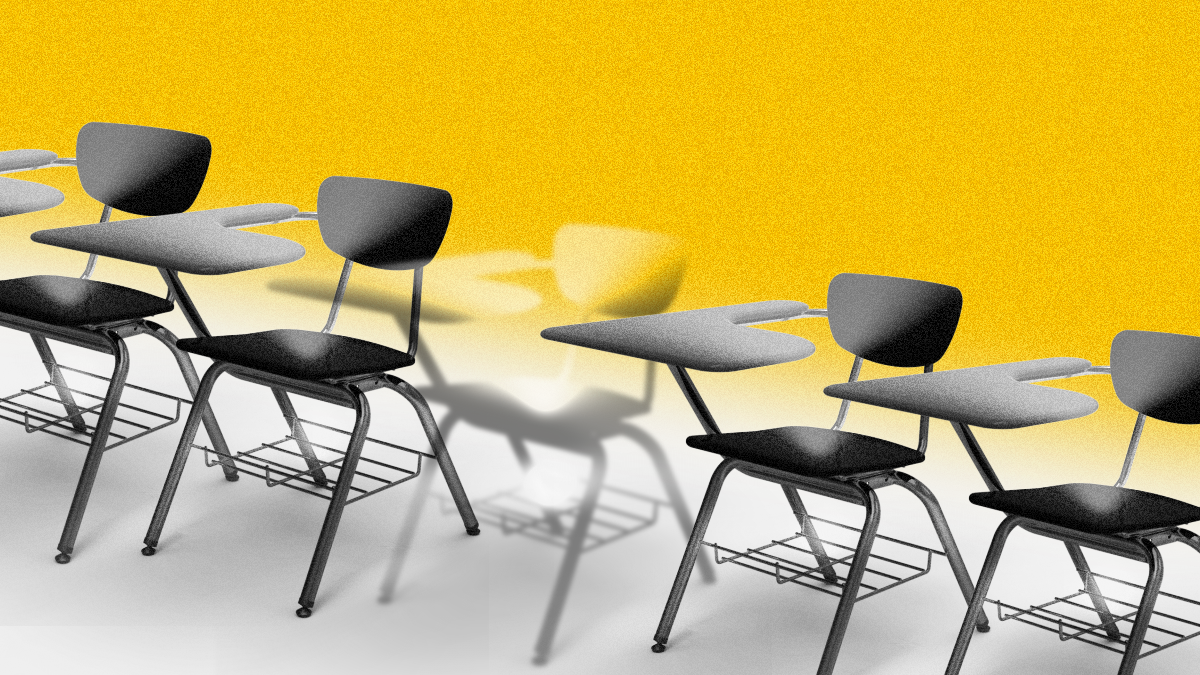
The Missing Data for Systemic Improvements to U.S. Public School Facilities
Peter Drucker famously said, “You can’t improve what you don’t measure.” Data on facilities helps public schools to make equitable decisions , prevent environmental health risks, ensure regular maintenance, and conduct long-term planning. Publicly available data increases transparency and accountability, resulting in more informed decision making and quality analysis. Across the U.S., public schools lack the resources to track their facilities and operations, resulting in missed opportunities to ensure equitable access to high quality learning environments. As public schools face increasing challenges to infrastructure, such as climate change, this data gap becomes more pronounced.
Why do we need data on school facilities?
School facilities affect student health and learning. The conditions of a school building directly impact the health and learning outcomes of students . The COVID-19 pandemic brought the importance of indoor air quality into the public consciousness. Many other chronic diseases are exacerbated by inadequate facilities, causing absenteeism and learning loss. From asthma to obesity to lead poisoning, the condition of the places where children spend their time impacts their health, wellbeing, and ability to learn . Better data on the physical environment helps us understand the conditions that hinder student learning .
School buildings are a source of emissions and environmental impacts. The U.S. Energy Information Administration reports that schools annually spend $8 billion on energy , and emit an estimated 72 million metric tons of carbon dioxide . While the energy use intensity of school buildings is not itself that high when compared with other sectors, there are interesting trends such as education being the largest consumer of natural gas. The public school fleet is the largest mass transit system in the U.S. As of 2023 only 1-2% of the countries estimated nearly 500,000 buses are electric .
Data provides accountability for public investment. After highways, elementary and secondary education infrastructure is the leading public capital outlay expenditure nationwide ( 2021 Census ). Most funds to maintain school facilities come from local and state tax sources. Considering the sizable taxpayer investment, relatively little is known about the condition of these facilities. Some state governments have no school facilities staff or funding to help manage or improve school facilities. The 2021 State of Our Schools Report , the leading resource on school facilities data, uses fiscal data to highlight the issues in school facilities. This report found that there is a $85 billion annual school facilities infrastructure funding gap , meaning that, according to industry standards for both capital investment and maintenance, schools are funded $85 billion less than what is required for upkeep. Consistent with these findings, the U.S. Government Accountability Office conducted research on school building common facilities issues and found that, in 2020, 50% of districts needed to replace or update multiple essential building systems such as HVAC or plumbing.
What data do we need?
Despite the clear connections between students’ health, learning, and the condition of school buildings, there are no standardized national data sets that assist school leaders and policy makers in making informed and strategic decisions to systematically improve facilities to support health and learning.
Some examples of data points school facilities advocates want more of include:
- The number of school districts with Facilities Master Plans, or similar long-range planning tools adoption, and funding allocations
- Emergency planning and standards for declaring school closures, especially for climate-related emergencies such as extreme heat and wildfire smoke
- Landscape and scoping datasets such as total number of facilities, square footage of buildings, acres of land managed, number and type of leased facilities
- Condition reports, including dates of last construction, repairs, and maintenance compliance checks
- Prioritization of repairs, resource usage (especially energy and water), construction practices and costs, waste from construction and/or ongoing operations
- Indoor environmental quality information such as the percent of classrooms meeting industry ventilation standards
- Board policies, greenhouse gas emissions reductions, funds dedicated to sustainability or energy staff positions, certifications and awards, and more.
Getting strategic and accessible with facilities data
Gathering this type of data represents a significant challenge for schools that are already overburdened and lack the administrative support for facilities maintenance and operations. By supporting the best available facilities research methods, facilities conditions standards, and dedicating resources to long term planning, we ensure that data collection is undertaken equitably. Some strategies that bear these challenges in mind are:
Incorporate facilities into existing data collection and increase data linkages in integrated and high quality data centers like National Center for Education Statistics . School leaders should provide key facilities metrics through the same mechanisms by which they report other education statistics. Creating data linkages allow users to make connections using existing data.
Building capacity ensures that there are staff and support systems in place to effectively gather and process school facilities data. There are more federal funds than ever before offered for building the capacity of schools to improve facilities conditions. For instance, the U.S. Department of Education recently launched the Supporting America’s School Infrastructure grant program , aimed at developing the ability of state departments of education to address facilities matters.
Research how school facilities are connected to environmental justice to better understand how resources could be most equitably distributed. Ten Strands and UndauntedK12 are piloting a framework which looks at pollution burden indicators and school adoption of environmental and climate action . We can support policies and fund research that looks at this intersection and makes these connections more transparent.
The connection between school facilities and student health and learning outcomes is clear. What we need now are the resources to effectively collect more data on school facilities that can be used by policy makers and school leaders to plan, improve learning conditions, and provide accountability to the public.
The Federation of American Scientists values diversity of thought and believes that a range of perspectives — informed by evidence — is essential for discourse on scientific and societal issues. Contributors allow us to foster a broader and more inclusive conversation. We encourage constructive discussion around the topics we care about.
A supply-side tax credit (STC) could offer a tax incentive to material suppliers and professional service consultants that provide goods or services to affordable housing projects.
The Department of Housing and Urban Development (HUD), Department of Commerce, and Department of Transportation should jointly develop and manage a data resource—a Housing Production Dashboard—to track housing production within and across states.
Exempting affordable housing from volume caps would address the underlying issue and have the greatest impact in this housing emergency.
The U.S. should establish a national housing loss rate to stand alongside the national unemployment rate as a key indicator of social and economic well-being.
- Essentials Archive
- EDspaces Insights Archive
Funding Gap for Nation’s Public School Buildings Tops $85 Billion
New report from the 21 st Century School Fund, the International WELL Building Institute and the National Council on School Facilities shows massive underinvestment in education facilities, identifies solutions to achieve healthier, more sustainable elementary and secondary schools
The 2021 State of Our Schools Report: America’s PK-12 Public School Facilities , released last fall by the 21 st Century School Fund , the International WELL Building Institute (IWBI) and the National Council on School Facilities , projects that the United States faces a projected shortfall of a staggering $85 billion in school facility funding every year. Districts are spending about $110 billion every year on maintenance, operations, and capital construction – but the educational facilities standards for good stewardship necessitates nearly $195 billion. The rise in the nation’s PK-12 gap has been brought on by increased school construction costs, building inventory increases, and a sharp decline in facility expenditures after the great recession.
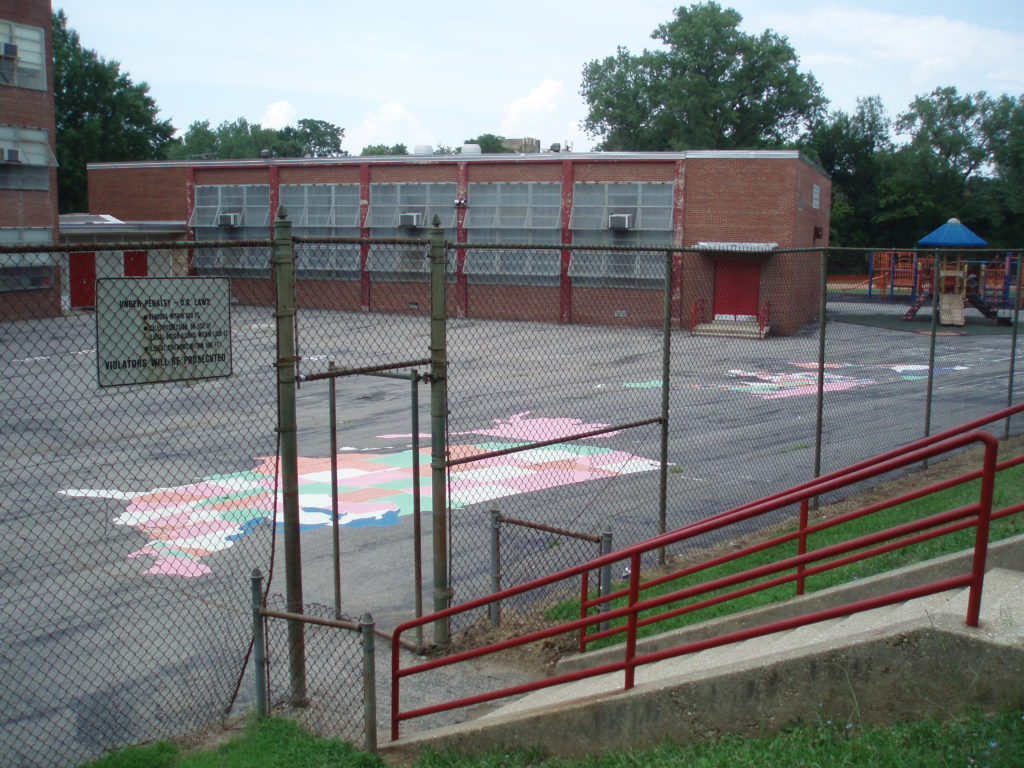
All this despite extraordinary efforts on the part of local communities and states to deliver public school buildings that help protect the health and safety of the students, teachers and staff who walk through their doors every day.
“In our last report in 2016, we saw an annual gap of $46 billion in school facilities funding – $60 billion in today’s construction dollars” said Mary Filardo, executive director, 21 st Century School Fund and lead author of the report. “Unfortunately, while local districts are struggling with making facilities safe in a pandemic, they are faced with longstanding deficiencies in their aging infrastructure which makes this very difficult.”

In the United States, PK-12 school facilities are the second largest sector of public infrastructure spending behind only highways. However, unlike transportation infrastructure, which has most of its capital costs paid from federal and state sources, in most states local school districts individually bear the heaviest responsibilities for school construction capital funding. Nationally, local districts cover 77 percent of school facility costs, with only 22 percent coming from states. Schools received just over 1 percent from federal funds ($7.1 billion) for school construction between 2009 and 2019. One third of these federal funds came from FEMA to aid schools after natural disasters.

The U.S. system for funding capital construction projects for public school facilities is no longer sustainable. “While states and the federal government contribute roughly 45 percent and 10 percent respectively, to school districts’ annual operating costs, the capital investment required to build and modernize buildings falls most heavily on local districts and taxpayers,”said Rachel Hodgdon, president and CEO of IWBI. “If the financial resources in the community aren’t there, new construction rarely gets funded. Where our children learn matters, and access to safe, healthy and equitable learning environments should be a right, not a privilege.”
Where our children learn matters, and access to safe, healthy and equitable learning environments should be a right, not a privilege. Rachel Hodgdon, IWBI
The data from this report shows that the system is broken and has been for decades. Local districts held nearly half a trillion dollars in long-term debt at the end of fiscal year 2019. This represents a national average of slightly more than $11,000 per student. The poorest districts, particularly small and rural ones, cannot even afford to borrow capital to address their aging facilities.

The $85 Billion Gap
Across the nation, local school districts work hard to deliver healthy and safe public school facilities that offer suitable learning environments. They support ongoing operations and maintenance in annual operating budgets and invest in buildings and grounds construction and improvements in capital budgets. But every year the shortfall increases in both budgets, leaving school districts unprepared to provide adequate and equitable school facilities.
The $85 billion gap between what is needed for good stewardship and what districts and states have done occurs both in capital outlays and operations and maintenance.
- Annually, U.S. public school districts spent an average of $54.1 billion on capital improvements from fiscal year 2009 to 2019 (in 2020 dollars), leaving a capital investment gap of $57.4 billion.
- Annually, the United States spent an average of $56 billion on facilities operations and maintenance, leaving a maintenance and operations gap of $27.6 billion.
“Closing these annual funding gaps must be a top priority. We have Title 1 for the classroom. We need a Title 1 for school facilities as well. This will ensure that all public schools meet modern standards for health, safety, learning, and environmental sustainability and resiliency,” said Juan Mireles, president, National Council on School Facilities and director of facilities and transportation services, California Department of Education. “Too many of our schools are just old and worn out, with inadequate ventilation for clean air, which is a must during this pandemic. The recent 2020 GAO study on the condition of our nation’s public schools found that thousands of school districts have at least half of their schools in need of updates or replacements of key building systems or features.”
The Astounding Inequity
When comparing the funding for school districts across socioeconomic, race, ethnicity and location, the disparities were profound. On average, school districts with high levels of economically disadvantaged students spent less per school than well-off suburban communities. These structural inequities are also found in and often compounded by racial and ethnic composition and the locations of the districts. Rural districts serving high poverty public school communities have funded capital improvements at almost half the level of the national average — $2.3 million on average per school compared to $4.3 million per school.

“This is another area where those who have the least suffer the most,” said Hodgdon. “Schools that are in a state of disrepair — suffering from poor indoor air quality due to lack of ventilation and proper filtration and compromised water quality — are often in the most disadvantaged communities. These schools weren’t sufficient before the pandemic; today, in many cases, they are just plain dangerous.”
The Health, Performance and Economic Impact
With more than one-sixth of the entire U.S. population inside PK–12 public school buildings each weekday, modernizing and replacing old public schools can have a major impact on the health and performance of both students and staff. These efforts can also enable communities to conserve land, energy and water, reduce carbon emissions, and in the face of climate change, protect lives and reduce the level of relief funding needed following disasters.
Looking to the Future
The report found that if school districts across the nation dedicated 15 percent of their recent Elementary and Secondary School Emergency Relief (ESSER) funds to addressing the crisis of school facilities conditions in low wealth and high need communities, they would have about $30 billion over the next three years to reduce deferred maintenance and make their schools healthier and safer.
This report provides Congress and state leaders with a roadmap to address these daunting challenges to rebuild our nation’s schools for communities and families today and for generations to come. Mary Filardo, 21st Century School Fund
Congress is currently considering additional funding to address long standing facilities deficiencies. If there was $130 billion of federal funding dedicated to rebuilding America’s schools, it could close the capital investment gap by about 22 percent over 10 years. Federal funding is the only way many low-wealth and high-need districts will be able to bring their PK-12 schools into the 21 st century.
“The status quo is unsustainable. This report provides Congress and state leaders with a roadmap to address these daunting challenges to rebuild our nation’s schools for communities and families today and for generations to come,” says Filardo.
EDmarket was a supporting organization for the 2021 State of our Schools Report , along with more than 30 non-profit organizations, education associations and businesses helping make the data in the report widely available. To dive deeper into the data cited here as well as to find more detail about the conditions of schools in each state, please visit stateofourschools2021.org.
Related Content

- Conferences
- Virtual Library
- Editorial Board Member
- Write For Us
- July 14, 2021
- Posted by: rsispostadmin
- Categories: Education, IJRISS, Social Science
International Journal of Research and Innovation in Social Science (IJRISS) | Volume V, Issue VI, June 2021 | ISSN 2454–6186
School Facilities and Infrastructure Management in Improving Education Quality
Felia Santika, Sowiyah, Umigiarini Pangestu and Mutiara Nurahlaini Faculty of Teacher Training and Education, Universitas Lampung, Indonesia
Abstract: The purpose of this study is to know the Management of School Facilities and Infrastructure in Improving the Quality of Education. This study uses a comparison journal related to Facilities and Infrastructure in the field of education. Based on the results of a review of libraries from various countries in the world, the authors found that school facilities and infrastructure can improve the quality of education. Therefore, the school is expected to manage the facilities and pre-retirement in meeting the needs. Facilities and infrastructure greatly affect the ability of students in the learning process. It can be said that quality school facilities and infrastructure help attract and retain teachers, support improved student outcomes, and have a positive economic impact on the community. And it can be known that complete school facilities and infrastructure can determine the number of students. Therefore, the role of facilities and infrastructure is very important to attract the attention of the community so that the school has fans. The importance of school facilities and pre-retirement management in improving the quality of education attracts researchers to review, and this article to test how the management of facilities and infrastructure in improving the quality of education.
Keywords: education quality, education management, facilities and infrastructure management, literature review.
I. INTRODUCTION
Education is one of the basic needs for humans. Education can be one way for people to achieve their goals (Akareem & Hossain, 2012). School as educational institution is basically established as a means for the teaching and learning process (Akhihiero, 2011). As the new demands on the education system, the education system is required to focus more on emphasizing the quality of education, especially on facilities and infrastructure. These shifts and changes occur not only in developed countries, but also in developing countries in the world. Educational facilities and infrastructure are supporting matters that facilitate the teaching and learning process in school. Facilities and infrastructure include school buildings, equipment including teaching aids, books, typewriters, computers and laboratory equipment (Akhihiero, 2011; Herwan, Aswandi, & Chiar, 2018). Facilities and infrastructure become one of the indicators of the quality of education because Facilities and Infrastructure in education is one of the determining factors in the success of education. The completeness of educational facilities and infrastructure in school greatly influences the effectiveness of learning, both in and out of the classroom (Darmastuti, 2014).
DU 1st Merit List 2023
Academia.edu no longer supports Internet Explorer.
To browse Academia.edu and the wider internet faster and more securely, please take a few seconds to upgrade your browser .
Enter the email address you signed up with and we'll email you a reset link.
- We're Hiring!
- Help Center

Community Participation in School Planning: Case Studies of Engagement in School Facilities

In education, as in other institutional systems, decisions about school facilities tend to be made by a few people who are not the direct building users, often ignoring the direct involvement of teachers and students. This book presents guidance for creating a constructive dialogue between school officials and the surrounding community on a school planning process that contributes to enhancing educational quality. The benefits of community participation are addressed as are descriptions of the principle parts of the participation process, including strategic planning, goal setting, and long term planning. Case studies were selected because each addresses community and user participation as an integral part of the school planning process. The case studies propose a humanistic approach to school planning that would be beneficial for educators, school administrators, policy makers and architects who are interested in engaging users in the planning process.
Related Papers
Henry Sanoff
IUL Research
Yael Duthilleul
The purpose of this reflection paper is to present a new framework to guide the process of investment in education infrastructure through participatory planning, and to consider its application to the development of innovative spaces. Financing education infrastructure provides an opportunity to innovate to support student learning, but for this to happen infrastructure and education investments need to be conceived from the beginning as a single, intertwined process. The Constructing Education framework is based on research evidence about the effects of educational environments and theoretical understanding of change. It draws on the issues identified in a series of in-depth reviews carried out in the cities of Espoo, Finland, the department of Seine-Saint Denis, France and Malmö, Sweden, to explore the links between construction and education during the investment process. The intention of the framework is that collaborative actions undertaken at individual, structural and cul...
Ellen Shoshkes
This report describes a national design competition sponsored by the City of Trenton, NJ and the Trenton School District, for the renovation and expansion of a hundred year old school building in an historic neighborhood. The overarching goal of the competition was to demonstrate that it is possible to implement a participatory comprehensive planning process that would incorporate innovative design strategies to preserve historic neighborhood schools on constrained urban sites without adding unnecessary time or cost. Another important goal was to create a model process that could be replicated both in New Jersey, where a major school construction program was underway, and in other states undertaking school construction. This publication describes that model process, the problems that arose during implementation, how those were addressed, and the lessons learned.
Nelly Stromquist
National Clearinghouse for Educational Facilities, 1090 Vermont Ave., NW, Suite 700, Washington, DC 2005-4905; e-mail: [email protected]. For full text: http://www.edfacilities.org/pubs . ... National Clearinghouse for Educational Facilities, Washington, DC.
Michael Vasu
Michael McCall
Societies MDPI
Children’s participation in planning has been investigated to some extent. There are, however, unexplored topics, particularly concerning what is needed for children’s participation to become a regular process. Based on case studies in Sweden, this article draws some conclusions. It is quite possible to organize ordinary processes where children participate in community building, in collaboration with planners, as part of their schoolwork. The key question is how this can be done. Clearly, it needs to occur in close collaboration with teachers and pupils, however it also needs to be implemented in a system-challenging manner. Thus, rather than looking for tools with potential to work in the existing school and planners’ world, it is important to design research that aims to create learning processes that have the potential to change praxis. Hence, it is not the case that tools are not needed, rather that children need to help to develop them.
RELATED PAPERS
Journal of sleep research
Elisabete Ramos
Otolaryngology - Head and Neck Surgery
Suzana Sousa
András Pataricza
Marc Sherman
Perspective
Carl-Johan Olsson
Panama - Selected Issues
Olga Bespalova
SSRN Electronic Journal
Vishal Gohil
Química Nova
Erika Jardim
Isabela Perossi
Jukema (Jurnal Kesehatan Masyarakat Aceh)
Aditya Candra
Chemischer Informationsdienst
Carl Osburn
International Journal of Research Publications
Gema Nazri Yanni
Sustainability
Josephine Kimani
AL-TARBIYAH: Jurnal Pendidikan (The Educational Journal)
Fahri Maulana
Pedro Galilea Ballarini
Halyena Indan
Josue David Sibaja Lozano
Review of Scientific Instruments
RAMANA GRANDHI
Journal of Advanced Nursing
Rani Samsudin
Physical review
Hassan Allouchi
Volume 5: 13th Design for Manufacturability and the Lifecycle Conference; 5th Symposium on International Design and Design Education; 10th International Conference on Advanced Vehicle and Tire Technologies
Vicente Fernando Cevallos Borja
Molecular Microbiology
Michio Homma
Romanian Biotechnological Letters
Bogdan Dimitriu
María Esther Martínez Figueira
- We're Hiring!
- Help Center
- Find new research papers in:
- Health Sciences
- Earth Sciences
- Cognitive Science
- Mathematics
- Computer Science
- Academia ©2024

- 2020 GEM REPORT
- Inclusion and education
- Monitoring SDG 4
- Recommendations
- 2020 Webpage
- Press Release
- RELATED PUBLICATIONS
- Gender Report
- Youth Report
- Latin America and the Caribbean
- Central and Eastern Europe, Caucasus and Central Asia
- Background papers
- Statistical Tables
- 2019 Report
- 2017/8 Report
- 2016 Report
School facilities and environments need to be more inclusive
2020 Gender Report
CREDIT: Christopher Herwig / UNICEF
In an inclusive school, all students are welcome, feel they belong, realize their potential and contribute to daily school life. Inclusive schools ensure that all students, regardless of background, ability or identity, are engaged and achieving by being present, participating and learning. However, many schools fall short, including in terms of gender inclusion, for reasons ranging from poor infrastructure to unsafe learning environments.
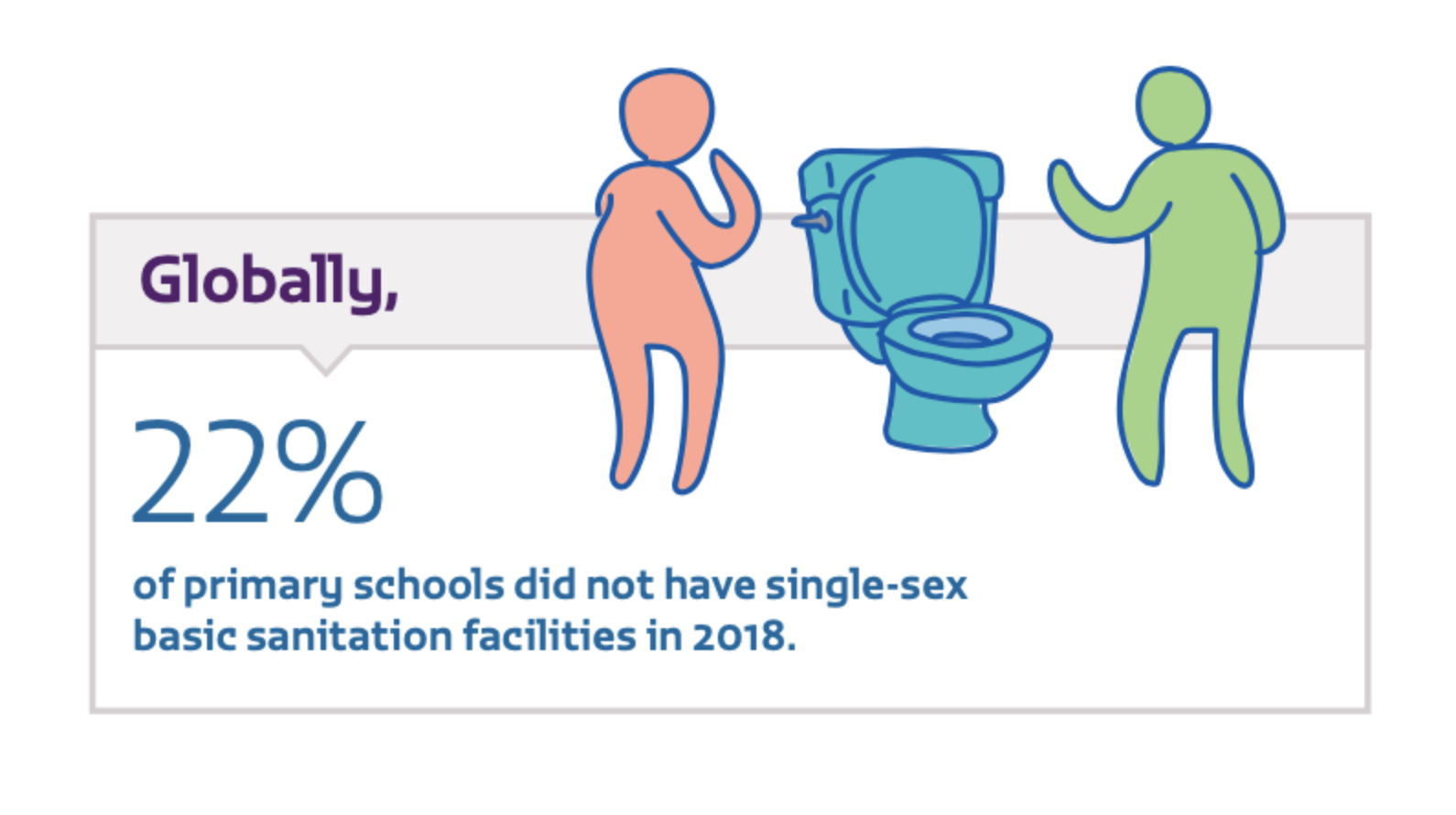
Globally, 78% of primary schools had single-sex basic sanitation facilities in 2018, although availability varies by education level; facilities are less common in primary than secondary schools, with a gap of over 10 percentage points at the global level. In Afghanistan, Jordan and Senegal, the percentage of upper secondary schools with single-sex toilets is about three times that of primary schools (Figure 16). Overall, some 335 million girls attend primary and secondary schools lacking facilities essential for menstrual hygiene (UNICVEF, 2019).
Figure 16: Fewer primary schools have single-sex toilets

The Philippines has had challenges in ensuring adequate menstrual hygiene management (Harver et al, 2013). According to the UIS database, just 39% of schools had basic sanitation and 46% had basic hygiene facilities in 2016. The Department of Education monitors implementation of its 2016, which committed schools to ensuring that menstrual hygiene management conditions were met. More than one-third of 35,000 schools did not have water during all school hours in 2018/19. Moreover, on average, there are 125 girls per functional toilet, much higher than the national standard of 50 students per toilet. However, improvements were reported relative to 2017/18 with respect to quality indicators such as lighting, ventilation, security and privacy, as well as availability of wrapping materials and disposal facilities (Philippines Department of Education, 2020).
Even where single-sex sanitation facilities exist, they may not be accessible to all students. The WHO/UNICEF Joint Monitoring Programme database, which provides information on accessibility for students with disabilities in 18 countries, reported that less than 1 in 10 schools with improved sanitation had accessible facilities in El Salvador, Fiji, Tajikistan, the United Republic of Tanzania and Yemen
The 1995 Beijing Declaration and Platform for Action called upon governments to ‘take measures to eliminate incidents of sexual harassment of girls in educational and other institutions’
SCHOOL-RELATED GENDER-BASED VIOLENCE UNDERMINES INCLUSIVE EDUCATION
Gender-based violence remains pervasive, even though less than 40% of women who experience it report it or seek help (UN Women, 2020c). School-related gender-based violence consists of acts or threats of sexual, physical or psychological violence occurring in and around schools, perpetrated as a result of gender norms and stereotypes and enforced by unequal power dynamics (UNESCO and UN Women, 2016). In strategic objective L.7, the 1995 Beijing Declaration and Platform for Action called on governments not only to ‘take effective actions and measures to enact and enforce legislation to protect the safety and security of girls from all forms of violence at work, in training and support programmes’ but also to ‘take measures to eliminate incidents of sexual harassment of girls in educational and other institutions’.
In spite of this commitment, millions of female and male children and youth experience gender-based violence in and around schools and online. Girls are more likely to experience verbal and sexual harassment, abuse and violence, while boys are more often subject to physical violence, including corporal punishment.
In many surveys, physical appearance is the most common reason for bullying, with female students more at risk of being bullied for this reason (UNESCO, 2019a). In Argentina, obese 9- to 10-year-old children were at significantly higher risk of bullying, with boys more common victims of physical bullying than girls (Kovalskys et al., 2016). In the United States, 30% of overweight girls and 24% of overweight boys in the final year of primary school had daily experience of teasing, bullying or rejection due to their size, with the rates rising to 63% for girls and 58% for boys in secondary school (Stevelos, 2011). Self-perception as underweight or overweight and dissatisfaction with personal appearance are positively correlated with the experience of bullying. Adolescent girls are more likely than boys to perceive themselves as overweight (Lin et al., 2017).
Girls are the main victims of unwanted sexual touching and non-consensual sex attempts perpetrated by classmates and teachers, respectively. In sub-Saharan Africa, girls reported that male teachers demanded sexual favours in exchange for good grades, preferential treatment in class, money and gifts (VACS, 2020). In Ghana, Kenya and Mozambique, girls reported it was difficult to decline teachers’ proposals as they feared retaliation (Heslop et al., 2015).
Violence is often directed at lesbian, gay, bisexual and transgender students and other learners who exhibit non-binary gender identities. In the United Kingdom, 45% of lesbian, gay and bisexual students and 64% of transgender students were bullied in schools (Bradlow et al., 2017). In the United States, 17% of heterosexual students reported having been bullied, compared with 24% of those unsure about their gender identity and 33% of lesbian, gay, bisexual, transgender and intersex students (CDC, 2017).
Technology has opened up new spaces in which children and youth are threatened, intimidated and harassed. In EU countries, one in five 18- to 29-year-olds reported having experienced cyber-harassment (UN Women, 2020b). Data from the 2013/14 WHO Health Behaviour in School-aged Children (UNESCO, 2018) and the more recent Global Kids Online project (covering Bulgaria, Chile, Ghana, Italy, Montenegro, New Zealand, the Philippines, South Africa and Uruguay) (UNICEF, 2020) show that girls especially suffer from violence online. Global Kids Online found that 54% of girls experienced online harassment, compared with 48% of boys. Among victims, 36% reported that the incidents occurred on social networks such as Facebook and Twitter, 18% reported harmful text messages and 14% said they received bullying mobile phone calls. Girls were more likely to be treated in a hurtful or nasty way via social networks (38%), text messages (21%), mobile phone calls (16%) and chat rooms (5%) while boys reported more mistreatment in online games (10%) and on media-sharing platforms (5%) such as YouTube, Instagram and Flickr (Global Kids Online 2020; Ginestra, 2020b).
School-related gender-based violence damages well-being and learning
School-related gender-based violence undermines the achievement of inclusive and equitable education of good quality for all children and young people. Consequences may include severe health and psychological harm, pregnancy, HIV or other sexually transmitted infections. Violence can lead to loss of interest in school, disrupted studies or early school leaving. In Honduras, 55% of girls reported not attending school at some point due to physical violence perpetrated by teachers, while 22% of female students in Malawi reported missed school due to unwanted sexual experiences (VACS, 2017). For victims who continue their studies, low achievement is common, as they try to avoid attention from teachers and peers (Ginestra, 2020b). According to 2018 PISA data, bullied students in OECD countries scored 21 points lower in reading on average than their peers who had not been bullied (OECD, 2019c).
Countries have introduced laws, policies, programmes and initiatives to combat school-related gender-based violence. In Namibia, the Ministry of Education, Arts and Culture, with the support of UNICEF, introduced a National Safe Schools Framework in 2018 including seven safe learning and teaching space standards. One refers to prevention of and actions against violence and self-harm through maintaining safe schools and encouraging the school community to report violence. National frameworks of this kind need to be translated into local action. However, experience in Ghana, Kenya and Mozambique shows that this is often uneven, as lack of clarity in laws and programmes contributes to school staff not having access to necessary tools (UNESCO, UNGEI and UNICEF, 2019).
Right to Play, a school-based programme in Hyderabad, Pakistan, using sports and games to empower students to reduce violence in school and change gender norms, decreased peer victimisation by 33% among boys and 59% among girls
Changes in curricula can prevent and address school-related gender-based violence, challenging gender norms to help create a non-violent culture. These changes can encourage students to reflect on their own gender biases and roles in society and help them understand different gender identities. Connect with Respect, a programme in the Kingdom of Eswatini, Thailand, Timor-Leste, the United Republic of Tanzania, Viet Nam, Zambia and Zimbabwe, supports students in challenging harmful practices through practical learning activities involving critical thinking, reflections among small groups and role playing (UNESCO, UNGEI and UNICEF, 2019). The Lights4Violence project, developed in 2017 by a cluster of universities in Italy, Poland, Portugal, Romania, Spain and the United Kingdom, aims to prevent gender-based violence among adolescents by developing communication, anger management, and non-violent conflict resolution skills (Vives-Cases et al., 2019).
Measures can fit into existing curricula and be used in the classroom or in extracurricular activities. A Right to Play, a school-based programme in Hyderabad, Pakistan, uses sports and games to empower students to reduce violence in school and change gender norms. As of 2018, the programme had reached 8,000 children in 40 public schools and resulted in decreases in peer victimization by 33% among boys and 59% among girls. Symptoms of depression fell by 10% among girls and 7% among boys (Heslop et al., 2017).
Access to comprehensive sexuality education is key to preventing school-related gender-based violence. Comprehensive sexuality education promotes gender-equal attitudes among students, including understanding and respect of other gender identities; improves life skills, teaching students to negotiate the terms of sexual activity, understand the importance of consent and resist peer pressure to engage in or accept violence; transforms teachers’ and parents’ attitudes by engaging them in school interventions; and improves reporting of and response to incidents of violence by providing information and explaining the importance of coordinating with other organizations and services (Plan International UK and SDDirect, 2015). Program H, for example, is an intervention developed by Brazilian-based NGO Promundo, which engages young men in changing inequitable and violent norms related to masculinity through critical reflection and dialogue about gender equality in participatory meetings. Since 2002, the programme has been implemented in 9 countries, while 26 countries have carried out training, activities or partial adaptations. Evaluations in eight African, Asian, Latin American and south-eastern European countries indicate positive changes in attitudes on gender equality and in self-reported behaviour such as couples communication, violence, condom use and caregiving (Promundo et al., 2013).
Violence can become normalized and accepted as part of school life by students and authorities, which results in it being under-reported and unpunished. Students fear victimization, punishment or ridicule, and teachers may discourage complaints to protect colleagues (UNGEI et al., 2018). Confidential, independent and easily accessible reporting mechanisms can provide victims and witnesses with secure channels to report incidents of gender-based violence. These mechanisms can include school-based focal points, suggestion boxes, telephone helplines, confidential counselling and online reporting methods, linked to strong referral and support systems (UNESCO, UNGEI and UNICEF, 2019).
Students, parents, communities and teacher unions should be involved in training that helps them to reflect critically on their attitudes and values towards gender equality
The Zero Tolerance Programme in Nepal incorporated a suggestion box as a reporting mechanism to encourage students to inform authorities of any incident. Students felt more comfortable sharing their concerns and suggestions, and teachers changed their mindsets and attitudes towards students and teaching practices (USAID, 2018). In 2013, Peru implemented the programme Si se ve (Yes I can see), which included an online platform and a helpline to encourage reporting of violence in school. Thanks to this tool, schools can avoid hiring teachers who have been sanctioned for having perpetrated any type of violence. In 2013–2018, the programme responded to more than 26,000 cases of violence reported from the 53,000 participating schools (Peru Ministry of Education, 2019). An innovative approach in Pikine, Senegal facilitated reporting and connected child victims with protective services. More than 700 volunteers were trained and organized into a network connected to social welfare services. The programme increased the reported number of child protection cases and established a real-time monitoring system via an online dashboard (UNICEF, 2018b).
Programmes should also teach young people to intervene when violence occurs. Bystander approaches involve teaching life skills to enable people to identify, report or involve others in responding to incidents of violence. In Hong Kong, China, the project Positive Adolescent Training through Holistic Social Programmes focused on teaching secondary school students to become helpful social bystanders. It provided awareness-raising activities on bullying, space for self-reflection and opportunities to practice new behaviour. A gender perspective in the design was considered essential, as boys are more likely to drop out of such programmes in societies where masculine role models are prevalent (Tsang, Hui and Law, 2011).
School staff sometimes reproduce prevailing gender norms in classrooms. Therefore, it is important to train teachers to reflect critically on their attitudes and values related to gender equality and to develop empathy towards students. Students, parents, communities and teacher unions should be involved in this training. The Education Unions Take Action to End School-related Gender-based Violence programme, implemented in Ethiopia, the Gambia, Kenya, Sierra Leone, South Africa, Uganda and Zambia, aims to empower teachers to become active agents to end violence in schools. Between 2016 and 2018, over 30,000 participants were reached through awareness-raising workshops in schools and union meetings (UNGEI et al., 2018).
Codes of conduct are being developed. In Sierra Leone, the government and the teachers’ union developed a code of conduct by holding multi-stakeholder consultations in all regions, which legitimized the code as a tool to support teacher professionalism (UNESCO and UN Women, 2016). South Africa’s teacher code of conduct was revised to identify ways to deal with perpetrators of violence (UNGEI et al., 2018). In Zambia, the Ministry of General Education launched teacher standards of practice in 2019. Standard 1.5 expects teachers to promote a safe and inclusive school environment, free from school-related gender-based violence, and to be able to prevent, identify and respond to incidents of violence in schools (Zambia Ministry of General Education and UNESCO, 2019).
Modifying or adapting school settings could prevent school violence and improve student safety. Shifting Boundaries is a programme created in 2010 in response to high levels of teen dating violence in schools in the United States that increases staff presence in spots where violence is likely to occur, as previously identified by students and teachers. An evaluation in New York found that the programme helped reduce sexual violence victimisation in dating relations by 50%, sexual violence perpetration by peers by 47% and sexual harassment by 34% (Holditch Niolon et al., 2017).
Progress in recognizing and responding to school-related gender-based violence in recent years has helped in developing a broader understanding of violence in schools. It is important to pay closer attention to girl-on-girl and girl-on-boy violence and to reconsider the female-victim/male-villain dichotomy. Further research is also needed on school violence directed at lesbian, gay, bisexual, transgender and intersex students and on interventions that address it. Monitoring and evaluation mechanisms need to be strengthened if understanding of programme effectiveness is to improve. When education systems and schools make a concerted effort to address gender-based violence, they contribute to broader societal efforts to eliminate such violence and promote equality and respect. Schools should be a place where students feel safe and welcome, which is not possible if they remain sites of violence and gender inequality (Ginestra, 2020b).
This is one of many stories of girls who are the first in their family to graduate. It was collected by the GEM Report as part of a campaign, #Iamthe1stgirl, aiming to demonstrate progress in gender equality in education since the Beijing Declaration and Platform for Action 25 years ago.
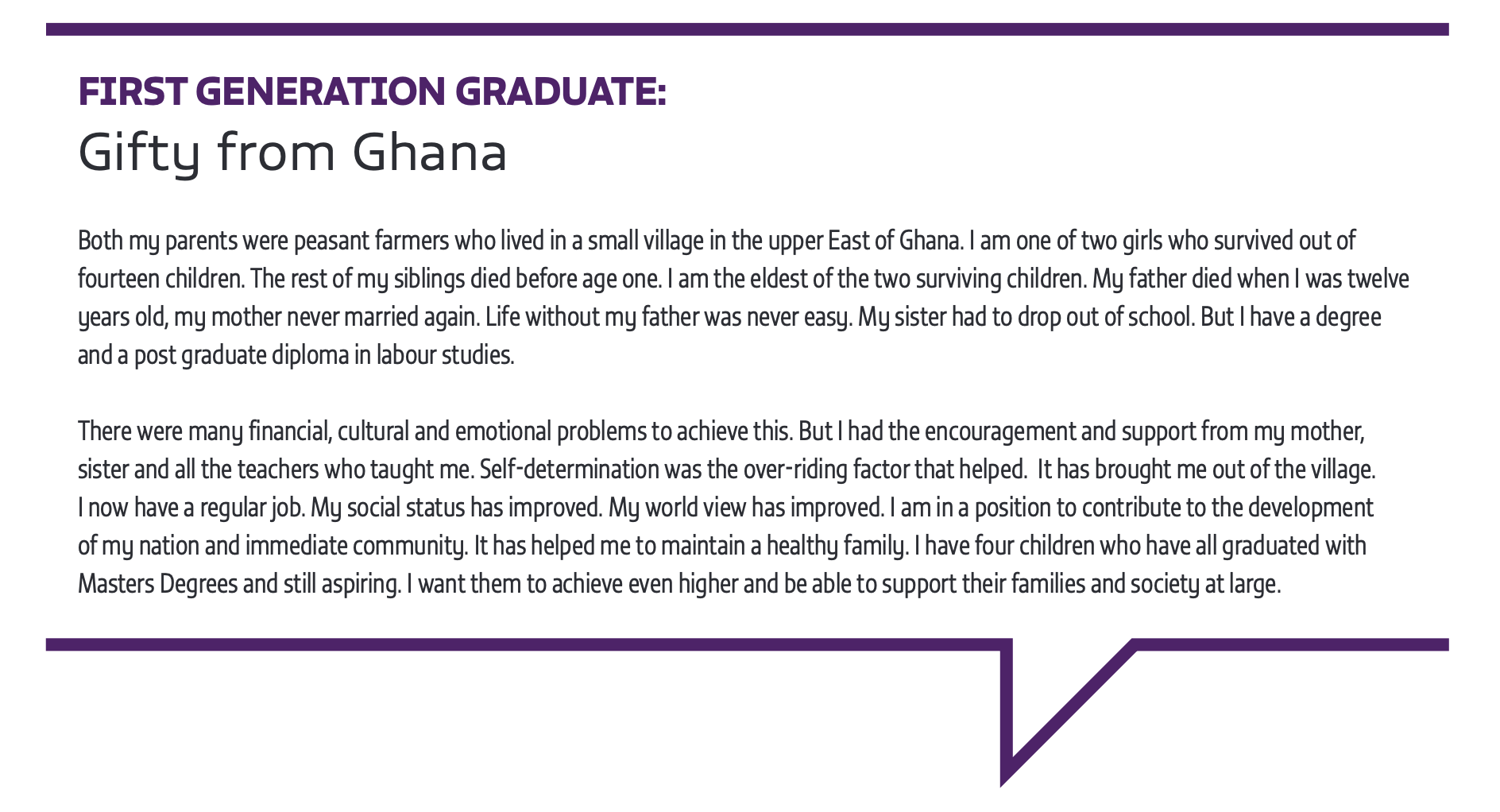
Exciting news! FloWater is now part of Bluewater !
How To Improve School Facilities For Students
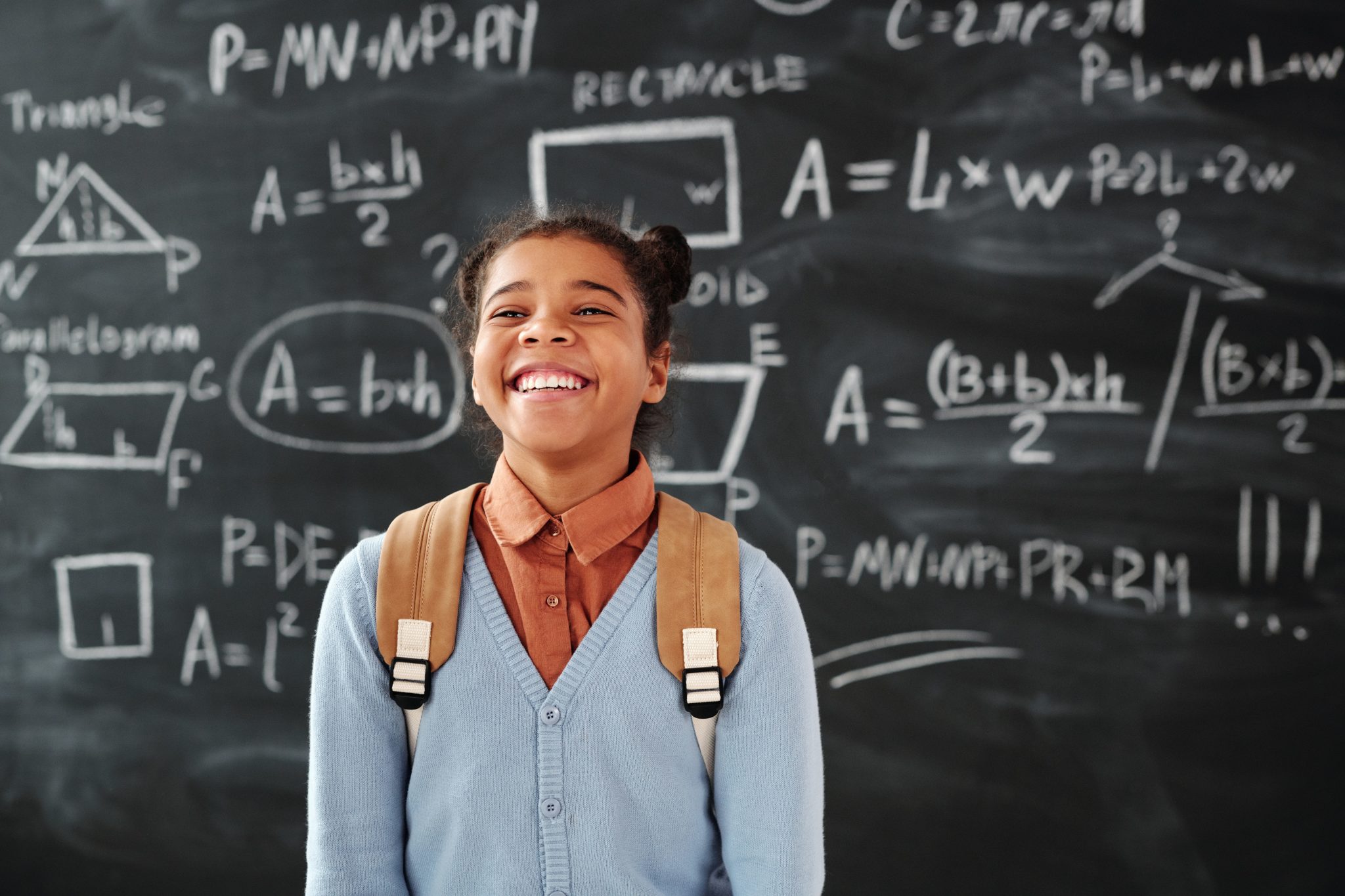
Education isn’t the only thing that needs to be regularly improved upon in schools. Classroom safety does too. Though classroom cleanliness has always been a main topic of conversation among school administrators, with the Covid-19 pandemic, the focus on maintenance and new sanitization protocols have gained greater steam.
Maintaining and modernizing building facilities is an ongoing challenge that must always be at the forefront of any school agenda. Part of learning how to improve school facilities involves evaluating innovative technologies that can meet the needs of what students and faculty members require in the present day. Whether it be facilities for student athlete wellness , school lunches, or classroom learning, understanding how to maintain good health for students by means of school facilities and other school programs is important for positive student performance.
Whether it’s receiving aid from the government or local school districts to improve public school facilities, asking community members for facilities funding, or taking on small school construction projects with the help of parent volunteers, improving school facilities for students is crucial to their performance and school safety. When students are taken care of, student engagement and academic performance can improve.
Here are six ways administrators can improve school facilities to uphold safety and sanitation standards, while also providing everyone with an enjoyable learning environment.
1. Improve Indoor Air Quality
Air quality and ventilation are important parts of creating a clean and safe environment for students. As part of the Centers for Disease and Control (CDC) guidelines for cleaning and maintaining healthy facilities, air ventilation tops the list. Proper ventilation systems help minimize airborne virus particles while also providing fresh air circulation to help students stay alert and focused when in class.
Providing clean air is one of the first steps administrators take when making building improvements. Recommended ways for how to improve school facilities include:
- Increasing circulation of outdoor air when possible
- Ensuring HVAC settings are set to maximize ventilation
- Cleaning and/or changing air filters regularly
- Confirming kitchen and restroom exhaust fans are working at optimal levels 1
Many administrators are also considering updating their building’s heating and air-conditioning systems to modernized systems. The new technology provides better ventilation and climate control, while also maintaining eco-friendly best practices. Additionally, the use of high-efficiency particulate air (HEPA) fans and filtration systems are part of system updates to enhance air cleaning. 2
2. Modernize Temperature Control
Temperature control is another area of improvement administrators can focus on. It ensures each area of the building is set to a comfortable temperature while also reducing energy consumption. Smart technology has made it easier to regulate temperature control appropriate for the environment without having to monitor it classroom by classroom. Furthermore, new heating and air-conditioning units also make less noise and are less disruptive than older thermostats and technology.
Analysis shows the ideal temperature range is between 68 and 74 degrees, although this varies depending on season and region. 3 However, it’s a good benchmark to use to help students stay focused. When temperatures are too hot or too cold, it makes it difficult to concentrate. It can also lead to mood changes due to increased discomfort which can also affect a student’s ability and willingness to learn.
3. Update Classroom Design
Classroom design has also changed dramatically over the past couple of years due to the pandemic. Considering the germiest places in school , increased space between seating, use of plastic barriers, and hand-sanitizing stations have all been implemented as part of protecting against the spread of Covid-19. Overcrowded classrooms may be a thing of the past as schools are planning to increase space in classrooms.
Generally speaking, though, classroom setups should promote student learning with multi-purpose areas that can support varying classroom needs. This includes installing the appropriate furniture, such as desks, tables, and cabinets, and providing the room with plenty of ventilation. Classroom design also includes compliance with ADA regulations and making adjustments to aid students still learning remotely from home.
4. Increase Use of Technology
Technology has changed rapidly, especially over the past decade. Students now have access to tablets and laptops they can check out of their school for the year and use for their personal use at home. Technology has allowed for increased communication and opened up doors for new ways of learning i.e. Zoom classes to help support student achievement academically during these unprecedented times.
Though increased use of technology greatly improves the functionality of school facilities, it must be evaluated on a regular basis. Administrators must provide equal accessibility among students with thorough training and adaptability to any new systems. Whether it’s for classroom learning purposes, the investment in technology for an educational institution must continuously be beneficial for all.
5. Focus on Eco-Friendly Updates
Making eco-friendly adjustments are also part of how to improve school buildings for students. Finding ways to save energy and follow sustainable practices at school are a key value for students today. Switching to eco-friendly equipment and sustainable protocols continues to be a way schools are changing their facilities for the better.
One of the biggest ways schools can improve their carbon footprint is by eliminating the use of plastic water bottles. It limits the amount of plastic waste on campus, as well as reduces the amount of waste that ends up in city landfills. In addition to switching to plastic-free alternatives when available, administrators should also install recycling bins around the building.
6. Repair or Replace Infrastructure
Replacing or even repairing a school’s infrastructure is costly, which is often why it gets put on the backburner when budget discussions arise. However, the cost of not repairing or replacing it can do more damage and be more expensive in the long run.
Older school buildings with outdated pipes can leach chemicals, including lead, into the water, which can be harmful to students and staff. Just as it is crucial to remove any form of lead in school drinking water , it’s also important to regularly check for deterioration and keep a record of when updates were last made. Scheduling repairs and regular maintenance also gives administrators an opportunity to use more sustainable materials and decide where to prioritize the maintenance budget in the future.
Ways FloWater Helps Administrators Meet Facility Improvement Demands
The FloWater Touchless Water Dispenser provides school administrators an effective solution to help with all areas of school facility improvement. From the use of eco-friendly technology to dispensing purified water in a contactless way, the Refill Station is a smart investment that offers immediate benefits. Here’s how it helps:
Improves Utility Quality
In addition to air quality, water quality is equally important for student well-being. FloWater immediately elevates the quality of water found in schools. It transforms tap water via an advanced seven-stage filtration and purification process. The result is cool, crisp water free of up to 99% of all contaminants, pollutants, and chemicals. The water is first purified, improvements are added, and then the final filter provides the refreshing finish. The fresh crisp water from our systems can also provide fundraising opportunities in the form of a water bottle fundraiser .
- Purify. In this initial stage, the water is passed through separate filters: Sediment, Carbon, and Advanced Osmosis. The Sediment filter catches and removes dirt, dust, and other solid impurities found in tap water and pipes. The Carbon filter takes care of the smaller particles, as well any unpleasant odors and tastes. And finally, the Advanced Osmosis filter removes the smallest contaminants like viruses, bacteria, pesticides, and other pollutants that affect tap water.
- Improve. After contaminants are filtered out, it’s time to replace some of the minerals that were removed as well. The fourth step is the Activated Oxygen stage which naturally sanitizes the internal tanks and removes impurities. The fifth and sixth steps are the alkaline and electrolytes enhancements. This is where minerals and electrolytes are added back into the water to neutralize acidity in the body and support healthy body functions.
- Finish . Finally, the water is passed through a Coconut Carbon filter made of real coconut husks. It absorbs any lingering contaminants, odors, or tastes to deliver crisp, clean water every time.
Regulates Temperature Control
Delivering cool, crisp water with a delicious taste encourages students to stay hydrated. As modern technology auto-regulates the most comfortable temperature, the FloWater Refill Station automatically chills water to an optimal drinking temperature of 42° every time water is dispensed. Everyone gets the same quality experience whether they’re the first person to fill up for the day or the last.
Innovative Design
The slim design of the Touchless Water Dispenser fits in nicely in any hallway, classroom, cafeteria, or any other high-traffic area when fresh water is needed. The system auto-replenishes and holds seven gallons of purified water at all times. Plus, there’s little to no maintenance required. The internal drain system and powerful drain pump prevent standing water from breeding germs and mold. A hidden catchment tray helps prevent dirt or debris from clogging the drain. There’s also a one-touch refill button and an added foot pedal option that makes the water dispenser a contactless experience to further minimize the spread of germs.
Eco-Friendly Features
The Touchless Water Dispenser is also eco-friendly with energy-saving features, including sleep mode, to keep the system running at low operation costs. It also eliminates the need for single-use plastic bottles. Meanwhile, since the dispensing area holds any water container size, students require fewer fill-ups throughout the day to stay hydrated during classes and sports activities.
Updated School Infrastructure
Set up is handled by one of FloWater’s certified technicians with a customer support team available should there be any problems or questions about the system. Additionally, the majority of customers only require filter changes once a year, saving on costs and scheduling for updates. Furthermore, the Touchless Water Dispenser meets ADA compliance to be used and enjoyed by all.
Essentially, the FloWater Touchless Water Dispenser helps administrators improve their schools’ facilities, addressing several needs at one time. It’s an optimal solution that instantly benefits everyone. Keeping students hydrated is a top priority, and the water dispenser gives equal accessibility in a way that is simple to use and maintain.
When excellent school leaders take care of their students through improved school safety and student health initiatives, academic performance, academic achievement, and student performance will only increase.
- Centers for Disease Control and Prevention . Operational Strategy for K-12 Schools through Phased Prevention. https://www.cdc.gov/coronavirus/2019-ncov/community/schools-childcare/operation-strategy.html
- Centers for Disease Control and Prevention. Ventilation in Buildings. https://www.cdc.gov/coronavirus/2019-ncov/community/ventilation.html
- Penn State. The Importance of School Facilities in Student Outcomes. https://sites.psu.edu/ceepa/2015/06/07/the-importance-of-school-facilities-in-improving-student-outcomes/
- Teach for America. School Buildings Were in Trouble Even Before Covid-19. https://www.teachforamerica.org/one-day/policy-and-advocacy/school-buildings-were-in-trouble-even-before-covid-19
Related Posts

New Study: Bottled Water Can Contain Up To 100 Times More Nanoplastic and Microplastic Than Previously Expected
A new study published in a peer-reviewed journal by the National Academy of Sciences has found that bottled water can contain 10…

Food waste in the U.S. is a serious problem
Food waste in the U.S. is a serious problem that gets worse during the holidays. Here’s how to have a sustainable Thanksgiving…

Ways to Reduce Plastic Waste at Conferences & Events
Conferences and events are cesspools for single-use plastics. Bins overflowing with plastic waste and disposables are a common sight. The average stadium…

Hydration and Your Physical Fitness: How much to drink and it’s benefits
Drinking water to stay hydrated is especially important for athletes and general active people!. Whether you’re healing from an injury, surgery or…

Level Up Your Summer Hydration with These Ice Recipes
Summer is here and so is the heat! Which means hydration is more important than ever – especially if you have kids…

How Sleep is Impacted by Your Hydration Levels
Most water loss happens through urination, but the body also loses fluid through the skin and from respiration, which is known as insensible…

The Top 9 Coworking Amenities Tenants Want Post-Covid
COVID-19 has turned the approach people once took to work on its head: They used to be accustomed to driving back and…

5 Ways To Incorporate Water Into Your Coworking Office Floor Plan
The COVID-19 pandemic changed how people live and interact with the environment. Face masks became a norm, along with carrying around personal…

The Importance of Commercial Water Filtration
Did you know that 74% of companies with revenues of $1 billion or more have found clean water to be an increasing…
Read our research on: Gun Policy | International Conflict | Election 2024
Regions & Countries
What public k-12 teachers want americans to know about teaching.
Illustrations by Hokyoung Kim

At a time when most teachers are feeling stressed and overwhelmed in their jobs, we asked 2,531 public K-12 teachers this open-ended question:
If there’s one thing you’d want the public to know about teachers, what would it be?
We also asked Americans what they think about teachers to compare with teachers’ perceptions of how the public views them.
Related: What’s It Like To Be a Teacher in America Today?
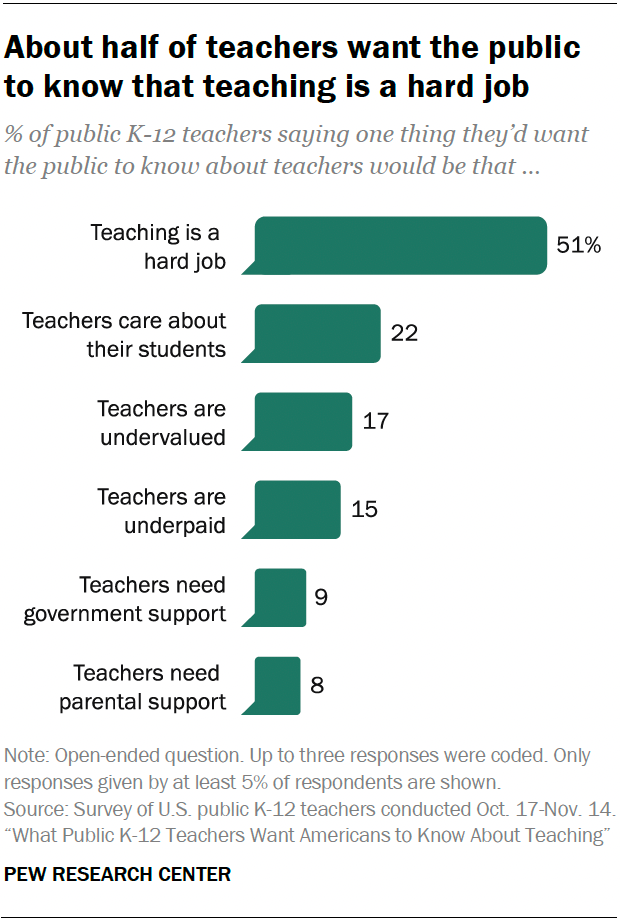
Pew Research Center conducted this analysis to better understand what public K-12 teachers would like Americans to know about their profession. We also wanted to learn how the public thinks about teachers.
For the open-end question, we surveyed 2,531 U.S. public K-12 teachers from Oct. 17 to Nov. 14, 2023. The teachers surveyed are members of RAND’s American Teacher Panel, a nationally representative panel of public K-12 school teachers recruited through MDR Education. Survey data is weighted to state and national teacher characteristics to account for differences in sampling and response to ensure they are representative of the target population.
Overall, 96% of surveyed teachers provided an answer to the open-ended question. Center researchers developed a coding scheme categorizing the responses, coded all responses, and then grouped them into the six themes explored in the data essay.
For the questions for the general public, we surveyed 5,029 U.S. adults from Nov. 9 to Nov. 16, 2023. The adults surveyed are members of the Ipsos KnowledgePanel, a nationally representative online survey panel. Panel members are randomly recruited through probability-based sampling, and households are provided with access to the Internet and hardware if needed. To ensure that the results of this survey reflect a balanced cross section of the nation, the data is weighted to match the U.S. adult population by gender, age, education, race and ethnicity and other categories.
Here are the questions used for this analysis , along with responses, the teacher survey methodology and the general public survey methodology .
Most of the responses to the open-ended question fell into one of these six themes:
Teaching is a hard job
About half of teachers (51%) said they want the public to know that teaching is a difficult job and that teachers are hardworking. Within this share, many mentioned that they have roles and responsibilities in the classroom besides teaching, which makes the job stressful. Many also talked about working long hours, beyond those they’re contracted for.
“Teachers serve multiple roles other than being responsible for teaching curriculum. We are counselors, behavioral specialists and parents for students who need us to fill those roles. We sacrifice a lot to give all of ourselves to the role as teacher.”
– Elementary school teacher
“The amount of extra hours that teachers have to put in beyond the contractual time is ridiculous. Arriving 30 minutes before and leaving an hour after is just the tip of the iceberg. … And as far as ‘having summers off,’ most of August is taken up with preparing materials for the upcoming school year or attending three, four, seven days’ worth of unpaid development training.”
– High school teacher

Teachers care about their students
The next most common theme: 22% of teachers brought up how fulfilling teaching is and how much teachers care about their students. Many gave examples of the hardships of teaching but reaffirmed that they do their job because they love the kids and helping them succeed.
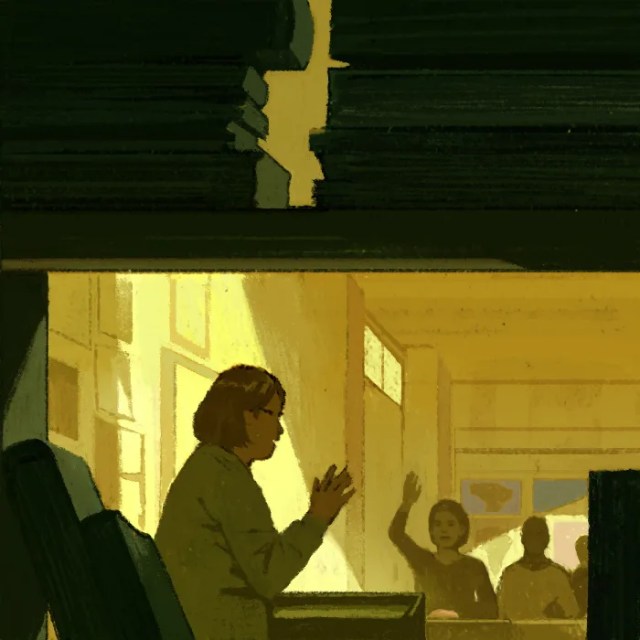
“We are passionate about what we do. Every child we teach is important to us and we look out for them like they are our own.”
– Middle school teacher
“We are in it for the kids, and the most incredible moments are when children make connections with learning.”
Teachers are undervalued and disrespected
Some 17% of teachers want the public to know that they feel undervalued and disrespected, and that they need more public support. Some mentioned that they are well-educated professionals but are not treated as such. And many teachers in this category responded with a general plea for support from the public, which they don’t feel they’re getting now.
“We feel undervalued. The public and many parents of my students treat me and my peers as if we do not know as much as they do, as if we are uneducated.”
“The public attitudes toward teachers have been degrading, and it is making it impossible for well-qualified teachers to be found. People are simply not wanting to go into the profession because of public sentiments.”
Teachers are underpaid
A similar share of teachers (15%) want the public to know that teachers are underpaid. Many teachers said their salary doesn’t account for the effort and care they put into their students’ education and believe that their pay should reflect this.
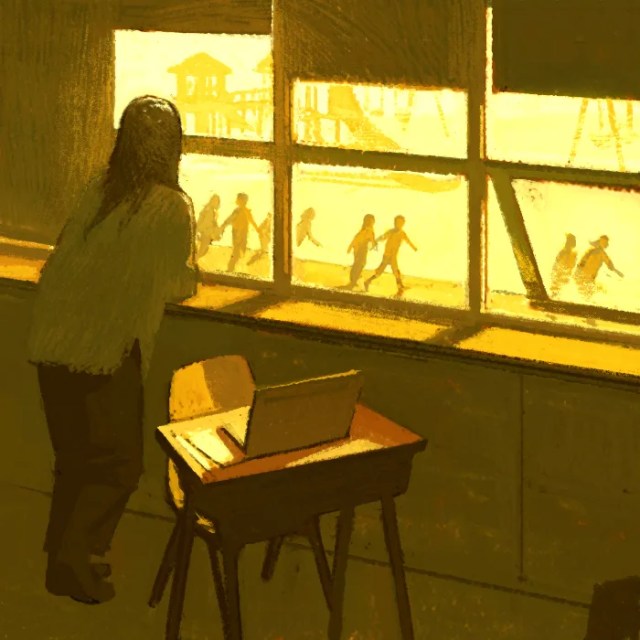
“We are sorely underpaid for the amount of hours we work and the education level we have attained.”
Teachers need support and resources from government and administrators
About one-in-ten teachers (9%) said they need more support from the government, their administrators and other key stakeholders. Many mentioned working in understaffed schools, not having enough funding and paying for supplies out of pocket. Some teachers also expressed that they have little control over the curriculum that they teach.
“The world-class education we used to be proud of does not exist because of all the red tape we are constantly navigating. If you want to see real change in the classroom, advocate for smaller class sizes for your child, push your district to cap class sizes at a reasonable level and have real, authentic conversations with your child’s teacher about what is going on in the classroom if you’re curious.”
Teachers need more support from parents
Roughly the same share of teachers (8%) want the public to know that teachers need more support from parents, emphasizing that the parent-teacher relationship is strained. Many view parents as partners in their child’s education and believe that a strong relationship improves kids’ overall social and emotional development.

“Teachers help students to reach their potential. However, that job is near impossible if parents/guardians do not take an active part in their student’s education.”
How the U.S. public views teachers
While the top response from teachers in the open-ended question is that they want the public to know that teaching is a hard job, most Americans already see it that way. Two-thirds of U.S. adults say being a public K-12 teacher is harder than most other jobs, with 33% saying it’s a lot harder.
And about three-quarters of Americans (74%) say teachers should be paid more than they are now, including 39% who say teachers should be paid a lot more.
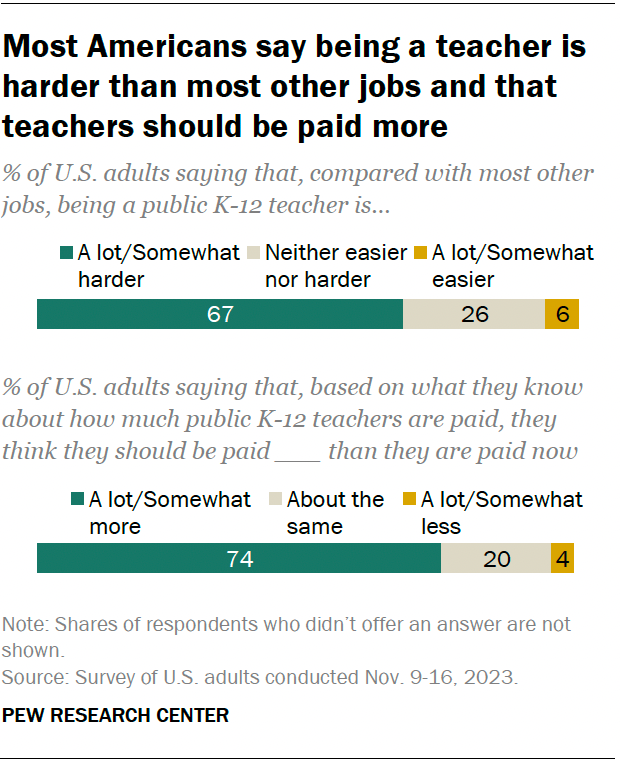
Americans are about evenly divided on whether the public generally looks up to (32%) or down on (30%) public K-12 teachers. Some 37% say Americans neither look up to or down on public K-12 teachers.
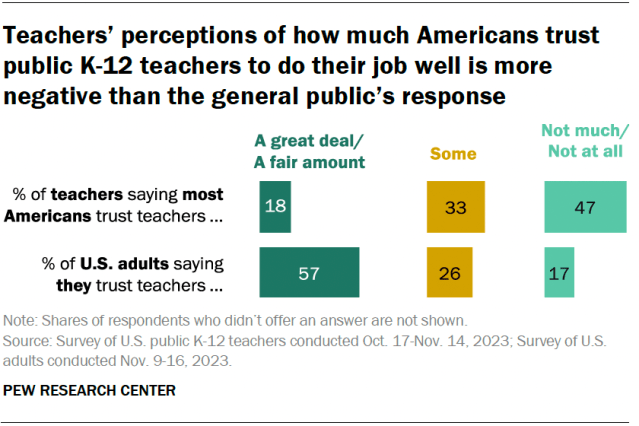
In addition to the open-ended question about what they want the public to know about them, we asked teachers how much they think most Americans trust public K-12 teachers to do their job well. We also asked the public how much they trust teachers. Answers differ considerably.
Nearly half of public K-12 teachers (47%) say most Americans don’t trust teachers much or at all. A third say most Americans trust teachers some, and 18% say the public trusts teachers a great deal or a fair amount.
In contrast, a majority of Americans (57%) say they do trust public K-12 teachers to do their job well a great deal or a fair amount. About a quarter (26%) say they trust teachers some, and 17% say they don’t trust teachers much or at all.
Related: About half of Americans say public K-12 education is going in the wrong direction
How the public’s views differ by party
There are sizable party differences in Americans’ views of teachers. In particular, Democrats and Democratic-leaning independents are more likely than Republicans and Republican leaners to say:
- They trust teachers to do their job well a great deal or a fair amount (70% vs. 44%)
- Teaching is a lot or somewhat harder when compared with most other jobs (77% vs. 59%)
- Teachers should be paid a lot or somewhat more than they are now (86% vs. 63%)

In their own words
Below, we have a selection of quotes that describe what teachers want the public to know about them and their profession.
Social Trends Monthly Newsletter
Sign up to to receive a monthly digest of the Center's latest research on the attitudes and behaviors of Americans in key realms of daily life
About Pew Research Center Pew Research Center is a nonpartisan fact tank that informs the public about the issues, attitudes and trends shaping the world. It conducts public opinion polling, demographic research, media content analysis and other empirical social science research. Pew Research Center does not take policy positions. It is a subsidiary of The Pew Charitable Trusts .
- About urbanplanet
- Visitor Maps
Walks in Ile-de-France
Urban situations.
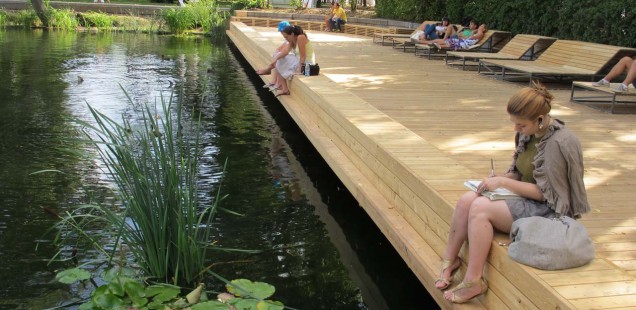
- Moscow, the city for life – Russia

Moscow Urban Forum in Moscow © C.Horn 2013
Recently the Moscow Government published under the headline “Moscow, the city for life” its seven development priorities. A document distributed at the Moscow Urban Forum in December 2013.
Moscow is with a population of over 12 million people one of the biggest metropolis in the world. The real number of citizens is difficult to establish as Moscow is the destination of many migrants, legal and otherwise, drawn by higher salaries and better services and living conditions. In 2010 alone, 126,000 newcomers were officially registered in the city, but the actual number is certainly much higher. The Moscow International Internet Portal indicates that “By some estimates together with commuters working and studying in Moscow, migrants, transit visitors and tourists the daily actual population of Moscow amounts in general to 15 – 20 million people”. It is forecast that by 2035 the population of the Moscow region will increase by 4,000,000 people and amount to 22,800,000 people. It is expected that by 2020 passenger traffic generated by the ‘New Moscow’ will double whereas the capacity of the existing infrastructure is already exhausted.
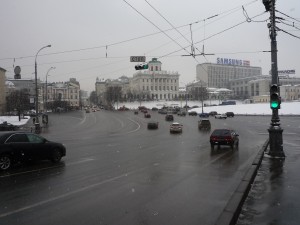
Inner city road in Moscow © C.Horn 2012
After adopting in 2011 different government programs for the key directions of the capital’s development, the Moscow Government worked out in 2013 its main objectives for the creation of comfortable living conditions with the definition of seven development priorities: 1) Mobile City; 2) Comfortable urban environment; 3) Healthy city; 4) Well-educated city; 5) Socially protected city; 6) New economics of Moscow; 7) Open Moscow.
It is a large and ambitious programme highlighting the goals reached and progress made in the last years, and illustrating the objectives for the next years in numbers and graphics.
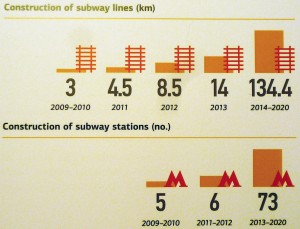
Moscow development priorities, Mobile City © Moscow
An important part takes the improvement and development of the transport infrastructure. Moscow is literally suffocated by the significant growth of the personal car fleet, doubling from 2.6 millions cars in 2000 to 4.5 million in 2012 and the increase of commuting du amongst others to the ongoing separation of business centres and residential areas. Over two-thirds of the municipal investments have been assigned in future for the improvement and modernisation of the transport infrastructure, roads and public transport, an estimated 329 billion roubles for 2013.
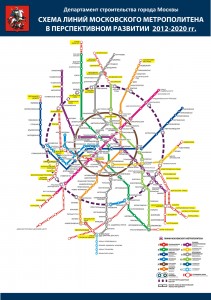
Moscow Subway Plan 2013-2020 © Moscow Subway
Today over 60% of the total volume of Moscow passenger transportation is carried by the subway and this traffic capacity should increase by 1.2 billions persons annually. Just to illustrate the ambitions, the program foresees to rise the average annual construction of subway stations from 2.75 stations, from 2009 – 2012, up to 9.1 stations per year for the period 2013-2020, with the final objective to construct 73 new stations by 2020. They say themselves, that it is the most rapid construction program in the entire history of the Moscow subway. In comparison the metro line of the Paris metropolis, Le Grand Paris Express, foresees to build 205 km of metro lines and 72 new stations between 2013 and 2030. It seems that Moscow want to do in less than half the time.
The development priorities draw the picture of a metropolis with a population using in the last years more intensely the public spaces, the cultural institutions, the shopping area and demanding for a higher urban living standard. A population that has better access to medical facilities and a growing life expectancy, 75.8 years in 2012, and a growing natality rate. A population with opportunities for a better education starting from more kindergartens over preschools to high schools. Interesting is the development of the average salary of a school teacher in Moscow, from 39200 roubles in 2010 up to 64100 roubles in 2013: an average annual growth of 12% in a context of an inflation of approximately 6 %, leaving a real salary growth of 6 % per year. Not bad, seen from a Western European perspective.

Pedestrian Street in Moscow © C.Horn 2013
But Moscow also wants to be a city that cares about its less fortunate citizens. The program is about social protection of older generations, assistance to needy families and persons with limited capabilities. It is about free access to public services, like transport, medical treatment, recreation, financial support and accessibility of public buildings. It also concerns providing housing for certain categories of citizens, probably one of the most difficult task, as Moscow has been ranked regularly among the five most expensive cities in the world in terms of the cost of housing.
To finance this new and improved public facilities and services, the Moscow Government counts on the dynamic of investments, supposed to grow from 732 billion roubles in 2010 up to 1719 in 2016. A mixture of better services for the investors, improved infrastructures and tax incentives should keep the dynamic going.
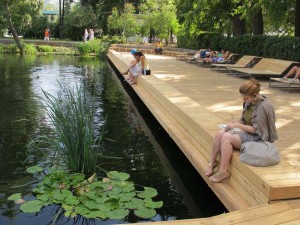
Gorky Park in Moscow in summer © www.2away.de
The Open Moscow development priority aims to create and strengthen the links between to residents and the public services. Improvements in the information and communication with the citizens, in the collecting and carrying out of suggestions of the citizens, and monitoring the activities of the public officers of municipal services, probably to fight corruption and try to establish a kind of confidence. Different internet sites like the Our City Website , regrouped in one Open Data Portal , should play in mayor part in this new Open Moscow development.
This program looks like a step in the right direction. It is developing Moscow towards a multi-layer, multi-functional city, trying to diversify the transport system, the municipal offer in public spaces, recreation and medial facilities, and supporting the poorer populations. The success of the renewal and transformation of the Gorky Park is a sign of these multi-functional and high-quality public spaces and the demand of the citizens for such spaces.
What is still missing for me is a clearer image of what Moscow wants to be in its whole, and in its parts. For the moment the document is set up as a catalogue of good intended programs, but not yet as an integral city development program. An example is the important investments in the public transport and in the road system, with the hope to encourage the citizens to abandon their excessive use of personal transport. But as long as the Moscow develops its road and parking system, citizens might prefer their car to public transport. Further detailed choices have to be taken on the different aspects of these programs and their feasibility in the near future.
Annotation: For this article I analysed the English version of the publication “Moscow, the city for life – Moscow development priorities” from the Moscow Government. During the lecture I got the impression that some mistakes had been made in the English translation. Download for the Russian version of the document (pdf) : Moscow City for life ru
Author: Christian Horn is the head of the architecture and urban planning office rethink

Related posts:
- The Japanese railway stations, a model for the Grand Paris ? – France
- The potential of Moscow’s industrial zones – Russia
- 18th August 2012 Moscow – Russia
- Hosting two major sports events – Russia
- The Baltic Pearl, St Petersburg – Russia
Hi, I have not been able to obtain this document in english. Do you by any chance have it and can share it with me? Please contact me at [email protected]
Nice. Can I have the English documents?
Hello, thank you for your interest. I have the Russian version in PDF and I can send it to you, if you like. But the English documents only on paper. Best regards, Christian
Poster une réponse
Commenter -->
Code Anti-spam *
Ce site utilise Akismet pour réduire les indésirables. En savoir plus sur comment les données de vos commentaires sont utilisées .
Link office Rethink – solutions for the built environment
Follow us on.
twitter stream rethink_obe
Nous poursuivons notre projet de #requalificationurbaine de la Résidence de l’Avre à Les-Clayes-sous-Bois en phase PRO avec une attention toute particulière portée sur la gestion des eaux pluviales sur le site. #Ecology #rethink pic.twitter.com/1NTxZ6jNeb
L'année dernière De RETHINK, office for the built envionment's Twitter via Twitter Web App · Répondre · Retweeter · Favori
Dans le cadre de la requalification urbaine de la Résidence de l'Avre à Les-Clayes-sous-Bois pour le groupe #Polylogis , nous poursuivons le projet d’aménagement des espaces extérieurs aux côtés de Philippe Buisson, paysagiste mandataire. #Ecology #rethink pic.twitter.com/QrJWjaqcav
#Materials : Polyurethane has excellent thermal insulation features. It is made from petrochemical products and is thus non biodegradable and harmful for the environment. Its recycling into an insulation foam helps reduce its environmental impact #rethink #ecology #recycle pic.twitter.com/UomcTJPDU1
Il y a un an De RETHINK, office for the built envionment's Twitter via Twitter Web App · Répondre · Retweeter · Favori
#materials : cellulose wadding is an excellent bio-based insulation material with a lifespan of up to 20 years. It is made from #Recycled paper and cardboards that are crushed then mixed with boron salt. It is very affordable however it is not water resistant. #rethink #Ecology pic.twitter.com/QSveGaGsuX
#Materials : often confused with plastic floorings, #linoleum is a sustainable bio-based material. Made with chalk, resin, natural pigments, jute, wood powder and linseed oil, it is an environmentally friendly alternative to polymer floors such as PVC #rethink #Ecology pic.twitter.com/rtzmcI27Nk
News / Actualités / Aktualitäten
Smarter conference / dl 17.07.2020, uia-hyp cup / dl 30.8.2020, conference fptlc / 31.8-2.9.2020, conference real corp / 15-18.9.2020, conference richard sennett / 10.9.2020, architecture competition/ dl 30.9.2020, urp 2020 / 25-27.11.2020, articles récents.
- Low Carbon Materials
- Biodiversity in cities – France
- Aus Frankreich
- Die kleine Ringbahn von Paris – Frankreich
- Plans action climat, entretien avec Yann Françoise
- Climate action plans, interview with Yann Françoise
- Grüne Welle – Frankreich
- Paris, entschleunigt – Frankreich
- Nicht mehr Bauen ? – Frankreich
- Mehr Fahrradfahrer in Paris – Frankreich
- Climate action plans, an essential planning tool for cities
- Kopenhagen CO2 neutral – Dänemark
- Rechte für die Seine ? – Frankreich
- Boulevard Périphérique von Paris – Frankreich
- Le Plan Climat de Berlin – Allemagne
- Notre-Dame de Paris – Frankreich
- Der Klimaschutzplan von Paris – Frankreich
- City centres in the Paris metropolitan area – France
- Gilets Jaunes – Frankreich
- Sozialer Wohnungsbau – Frankreich
- Umweltschutz und Bauprojekte – Frankreich
- Zwischennutzung im Aufwind – Frankreich
- Mobilisierung der Architekten – Frankreich
- Industrial sites and territories – Europe
- Velib’ & Co., Paris – Frankreich
- Carmes Polytechnique, housing in the heart of Paris – France
- Architekten in Frankreich
- Barcelonas Stadtautobahnen – Spanien
- Hurrikan Irma, Saint-Martin – Frankreich
- Innovation und Beton – Frankreich
- Paris entdeckt den Holzbau – Frankreich
- Stadt und Land – Frankreich
- Die Banalisierung der Champs-Elysées – Frankreich
- Sidi El Houari, Oran – Algerien
- Urban numbers
- The blue heart of Tatarstan – Russia
- Der Bauschutt des Grand Paris Express – Frankreich
- RS1 Bicycle highway n°1 – Germany
- 1t verbautes Holz gleich 1t gebundenes CO² – Frankreich
- Sotchi, les défis de l’héritage olympique – Russie
- Redesigning open spaces of a public housing estate – France
- Fußball-Europameisterschaft 2016 – Frankreich
- On the edge of the Paris metropolis – France
- Le Canopée Paris – Frankreich
- « Réinventer Paris » Gratis Entwerfen für Paris – Frankreich
- Die Eventisierung von Städten, Hamburg Hafencity – Deutschland
- Der Industriegürtel von Saint Petersburg – Russland
- Umbau der Uferschnellstrassen in Paris – Frankreich
- Goma, entre Lac Kivu et le Nyiragongo – RD Congo
- Kaliningrad, das Herz der Stadt – Russland
- Die Philharmonie de Paris und Jean Nouvel – Frankreich
- Le Corbusier und der Faschismus – Frankreich
- Goma, ein Phoenix in der Asche – DR Kongo
- Klimakonferenz Paris – Frankreich
- 7th January 2015, Paris – France
- Improving sustainable mobility in Gdansk – Poland
- Plotting Abu Dhabi – UAE
- Al Ain, eine Gartenstadt – UAE
- Le quartier Xujiahui à Shanghai – Chine
- Towards active mobility – Europe
- Die Metropole des Grand Paris – Frankreich
- Baustopp bei der Samaritaine – Frankreich
- Rethinking urban expressways – World
- Solar Decathlon 2014 in Versailles – Frankreich
- La Défense, a unique business district – France
- 16th March 2014, Crimea – Ukraine
- Kazans neue Städte – Russland
- Die Fondation Louis Vuitton in Paris – Frankreich
- Pajol, ein neues Stadtviertel – Frankreich
- 27th November 2013, Rome – Italy
- Building sustainable new towns for Egyptians
- Playtime, le corps dans le décor – France
- Tatarstan, un territoire dynamique – Russie
- Schwimmende Gärten in Paris – Frankreich
- Grandes ambitions urbaines de Bakou – Azerbaïdjan
- Stadterneuerung und Urheberrecht – Frankreich
- Dubaï, entre marginalisation urbaine et zoning fonctionnel – EAU
- Connecting the Grand Paris – France
- Mutations urbaines autour de la baie de Vitoria – Brésil
- Der Erfolg der Tramways – Frankreich
- Haussmann and the buildings of Paris – France
- Haussmann und die Gebäude von Paris – Frankreich
- Haussmann et les immeubles de Paris – France
- National assembly in Brasilia by Oscar Niemeyer – Brazil
- Trying to understand big data – World
- Ägyptens neue Städte – Ägypten
- Dakar, un chantier en suspens – Sénégal
- Quatre ans après les jeux olympiques – Chine
- Die Marke Eiffelturm – Frankreich
- La ville s’adapte au vélo – Monde
- Das Bergbaurevier Nord-Pas-de-Calais – Frankreich
- Taichung gateway park city – Taiwan
- Le Mapocho, un nouveau lien pour Santiago – Chili
- 6th May 2012 Bastille Paris – France
- Offshore Windparks – Frankreich
- Métro à Kaohsiung – Taiwan
- Difficultés de la gestion urbaine à Santiago – Chili
- Unterschätzte Baukosten – Frankreich
- Eine Villa Medici, Clichy-Montfermeil – Frankreich
- Wohnungsmangel und Armut – Frankreich
- The post-it competiton is invading La Défense – France
- Balzac ist weg – Frankreich
- La Défense Bürotürme versus Campus – Frankreich
- Die Metamorphose des 18. Arrondissement von Paris – Frankreich
- La Défense 2050, au-delà de la forme – France
- Roland-Garros reste à Paris – France
- Die PPP als Allheilmittel – Frankreich
- Bunte Linien für die Metropole Paris – Frankreich
- Paris, vor 150 Jahre von 12 auf 20 – Frankreich
- Shanghai, Capitale de l’industrie créative – Chine
- Dünkirchen – Frankreich
- Atelier d’été 2010, interface urbain rural – France
- Die Eroberung der Seineufer, Paris – Frankreich
- Bergerie de Villarceaux – Frankreich
- Les Halles, Paris – Frankreich
- Vitória – Brasilien
- Hôtel Lambert, Paris – Frankreich
- Paris Métropole meets NRW – Frankreich, Deutschland
- Le Grand Pari(s) – Frankreich
- Nemausus, Kulturerbe des 20. Jahrhunderts – Frankreich
- Sommerloch – Frankreich
- Schwierige Zeiten für Hochhäuser – Frankreich
- Die Kaserne De Bonne in Grenoble – Frankreich
- Wächst Paris über sich hinaus ? – Frankreich
- Renzo Piano und Le Corbusier – Frankreich
- Auf eine Neues, Ile Seguin – Frankreich
- Im Herzen der Stadt von Lyon – Frankreich
- Hochhausfieber in Paris – Frankreich
- Die Erneuerung von La Défense – Frankreich
- PIDUD Challenging Urbanism – France
- Constructing an elegant bridge – France
- Die Simone de Beauvoir Brücke in Paris – Frankreich
- Der Showroom Guerlain in Paris – Frankreich
- The Great Mosque of Porto-Novo – Benin
- Logistics centre for containers – France
- Paris Air Terminal Collapse Report – France
- Fire Station Living de Paris – France
- Das Kulturministerium in Paris – Frankreich
- Das Forum des Halles in Paris – Frankreich
- Shigeru Ban in Paris – Frankreich
- Centre National de la Danse – Frankreich
- Centre National de la Danse – France
- Forum 2004, Konferenz in Barcelona – Spanien
- Der Einsturz des Terminal 2E in Paris – Frankreich
- Flux des publications
- Flux des commentaires
- Site de WordPress-FR
Commentaires récents
- th.al dans La Défense, a unique business district – France
- Bistro de l‘Arche - La Défense (FR) - Rethink dans La Défense – Frankreich
- Reconstruct Goma - Goma (DRC) - Rethink dans Goma, entre Lac Kivu et le Nyiragongo – RD Congo
Copyright © 2024 Urbanplanet
Powered by WordPress and Origin
To revisit this article, visit My Profile, then View saved stories .
- Backchannel
- Newsletters
- WIRED Insider
- WIRED Consulting
Amanda Hoover
Students Are Likely Writing Millions of Papers With AI

Students have submitted more than 22 million papers that may have used generative AI in the past year, new data released by plagiarism detection company Turnitin shows.
A year ago, Turnitin rolled out an AI writing detection tool that was trained on its trove of papers written by students as well as other AI-generated texts. Since then, more than 200 million papers have been reviewed by the detector, predominantly written by high school and college students. Turnitin found that 11 percent may contain AI-written language in 20 percent of its content, with 3 percent of the total papers reviewed getting flagged for having 80 percent or more AI writing. (Turnitin is owned by Advance, which also owns Condé Nast, publisher of WIRED.) Turnitin says its detector has a false positive rate of less than 1 percent when analyzing full documents.
ChatGPT’s launch was met with knee-jerk fears that the English class essay would die . The chatbot can synthesize information and distill it near-instantly—but that doesn’t mean it always gets it right. Generative AI has been known to hallucinate , creating its own facts and citing academic references that don’t actually exist. Generative AI chatbots have also been caught spitting out biased text on gender and race . Despite those flaws, students have used chatbots for research, organizing ideas, and as a ghostwriter . Traces of chatbots have even been found in peer-reviewed, published academic writing .
Teachers understandably want to hold students accountable for using generative AI without permission or disclosure. But that requires a reliable way to prove AI was used in a given assignment. Instructors have tried at times to find their own solutions to detecting AI in writing, using messy, untested methods to enforce rules , and distressing students. Further complicating the issue, some teachers are even using generative AI in their grading processes.
Detecting the use of gen AI is tricky. It’s not as easy as flagging plagiarism, because generated text is still original text. Plus, there’s nuance to how students use gen AI; some may ask chatbots to write their papers for them in large chunks or in full, while others may use the tools as an aid or a brainstorm partner.
Students also aren't tempted by only ChatGPT and similar large language models. So-called word spinners are another type of AI software that rewrites text, and may make it less obvious to a teacher that work was plagiarized or generated by AI. Turnitin’s AI detector has also been updated to detect word spinners, says Annie Chechitelli, the company’s chief product officer. It can also flag work that was rewritten by services like spell checker Grammarly, which now has its own generative AI tool . As familiar software increasingly adds generative AI components, what students can and can’t use becomes more muddled.
Detection tools themselves have a risk of bias. English language learners may be more likely to set them off; a 2023 study found a 61.3 percent false positive rate when evaluating Test of English as a Foreign Language (TOEFL) exams with seven different AI detectors. The study did not examine Turnitin’s version. The company says it has trained its detector on writing from English language learners as well as native English speakers. A study published in October found that Turnitin was among the most accurate of 16 AI language detectors in a test that had the tool examine undergraduate papers and AI-generated papers.

David Gilbert

Matt Burgess

Lauren Goode
Schools that use Turnitin had access to the AI detection software for a free pilot period, which ended at the start of this year. Chechitelli says a majority of the service’s clients have opted to purchase the AI detection. But the risks of false positives and bias against English learners have led some universities to ditch the tools for now. Montclair State University in New Jersey announced in November that it would pause use of Turnitin’s AI detector. Vanderbilt University and Northwestern University did the same last summer.
“This is hard. I understand why people want a tool,” says Emily Isaacs, executive director of the Office of Faculty Excellence at Montclair State. But Isaacs says the university is concerned about potentially biased results from AI detectors, as well as the fact that the tools can’t provide confirmation the way they can with plagiarism. Plus, Montclair State doesn’t want to put a blanket ban on AI, which will have some place in academia. With time and more trust in the tools, the policies could change. “It’s not a forever decision, it’s a now decision,” Isaacs says.
Chechitelli says the Turnitin tool shouldn’t be the only consideration in passing or failing a student. Instead, it’s a chance for teachers to start conversations with students that touch on all of the nuance in using generative AI. “People don’t really know where that line should be,” she says.
You Might Also Like …
In your inbox: The best and weirdest stories from WIRED’s archive
Jeffrey Epstein’s island visitors exposed by data broker
8 Google employees invented modern AI. Here’s the inside story
The crypto fraud kingpin who almost got away
It's shadow time! How to view the solar eclipse, online and in person

Steven Levy

Will Knight

Benj Edwards, Ars Technica
- Skip to main content
- Keyboard shortcuts for audio player
- Your Health
- Treatments & Tests
- Health Inc.
- Public Health
Mental health care is hard to find, especially for people with Medicare or Medicaid
Rhitu Chatterjee

With rates of suicide and opioid deaths rising in the past decade and children's mental health declared a national emergency , the United States faces an unprecedented mental health crisis. But access to mental health care for a significant portion of Americans — including some of the most vulnerable populations — is extremely limited, according to a new government report released Wednesday.
The report, from the Department of Health and Human Services' Office of Inspector General, finds that Medicare and Medicaid have a dire shortage of mental health care providers.
The report looked at 20 counties with people on Medicaid, traditional Medicare and Medicare Advantage plans, which together serve more than 130 million enrollees — more than 40% of the U.S. population, says Meridith Seife , the deputy regional inspector general and the lead author of the report.
Medicaid serves people on low incomes, and Medicare is mainly for people 65 years or older and those who are younger with chronic disabilities.
The report found fewer than five active mental health care providers for every 1,000 enrollees. On average, Medicare Advantage has 4.7 providers per 1,000 enrollees, whereas traditional Medicare has 2.9 providers and Medicaid has 3.1 providers for the same number of enrollees. Some counties fare even worse, with not even a single provider for every 1,000 enrollees.
"When you have so few providers available to see this many enrollees, patients start running into significant problems finding care," says Seife.
The findings are especially troubling given the level of need for mental health care in this population, she says.
"On Medicare, you have 1 in 4 Medicare enrollees who are living with a mental illness," she says. "Yet less than half of those people are receiving treatment."
Among people on Medicaid, 1 in 3 have a mental illness, and 1 in 5 have a substance use disorder. "So the need is tremendous."
The results are "scary" but "not very surprising," says Deborah Steinberg , senior health policy attorney at the nonprofit Legal Action Center. "We know that people in Medicare and Medicaid are often underserved populations, and this is especially true for mental health and substance use disorder care."
Among those individuals able to find and connect with a provider, many see their provider several times a year, according to the report. And many have to drive a long way for their appointments.
"We have roughly 1 in 4 patients that had to travel more than an hour to their appointments, and 1 in 10 had to travel more than an hour and a half each way," notes Seife. Some patients traveled two hours each way for mental health care, she says.
Mental illnesses and substance use disorders are chronic conditions that people need ongoing care for, says Steinberg. "And when they have to travel an hour, more than an hour, for an appointment throughout the year, that becomes unreasonable. It becomes untenable."
"We know that behavioral health workforce shortages are widespread," says Heather Saunders , a senior research manager on the Medicaid team at KFF, the health policy research organization. "This is across all payers, all populations, with about half of the U.S. population living in a workforce shortage."
But as the report found, that's not the whole story for Medicare and Medicaid. Only about a third of mental health care providers in the counties studied see Medicare and Medicaid patients. That means a majority of the workforce doesn't participate in these programs.
This has been well documented in Medicaid, notes Saunders. "Only a fraction" of providers in provider directories see Medicaid patients, she says. "And when they do see Medicaid patients, they often only see a few."
Lower reimbursement rates and a high administrative burden prevent more providers from participating in Medicaid and Medicare, the report notes.
"In the Medicare program, they set a physician fee rate," explains Steinberg. "Then for certain providers, which includes clinical social workers, mental health counselors and marriage and family therapists, they get reimbursed at 75% of that rate."
Medicaid reimbursements for psychiatric services are even lower when compared with Medicare , says Ellen Weber , senior vice president for health initiatives at the Legal Action Center.
"They're baking in those discriminatory standards when they are setting those rates," says Steinberg.
The new report recommends that the Centers for Medicare & Medicaid Services (CMS) take steps to increase payments to providers and lower administrative requirements. In a statement, CMS said it has responded to those recommendations within the report.
According to research by Saunders and her colleagues at KFF, many states have already started to take action on these fronts to improve participation in Medicaid.
Several have upped their payments to mental health providers. "But the scale of those increases ranged widely across states," says Saunders, "with some states limiting the increase to one provider type or one type of service, but other states having rate increases that were more across the board."
Some states have also tried to simplify and streamline paperwork, she adds. "Making it less complex, making it easier to understand," says Saunders.
But it's too soon to know whether those efforts have made a significant impact on improving access to providers.
CMS has also taken steps to address provider shortages, says Steinberg.
"CMS has tried to increase some of the reimbursement rates without actually fixing that structural problem," says Steinberg. "Trying to add a little bit here and there, but it's not enough, especially when they're only adding a percent to the total rate. It's a really small increase."
The agency has also started covering treatments and providers it didn't use to cover before.
"In 2020, Medicare started covering opioid treatment programs, which is where a lot of folks can go to get medications for their substance use disorder," says Steinberg.
And starting this year, Medicare also covers "mental health counselors, which includes addiction counselors, as well as marriage and family therapists," she adds.
While noteworthy and important, a lot more needs to be done, says Steinberg. "For example, in the substance use disorder space, a lot of addiction counselors do not have a master's degree. And that's one of their requirements to be a counselor in the Medicare program right now."
Removing those stringent requirements and adding other kinds of providers, like peer support specialists, is key to improving access. And the cost of not accessing care is high, she adds.
"Over the past two decades, [in] the older adult population, the number of overdose deaths has increased fourfold — quadrupled," says Steinberg. "So this is affecting people. It is causing deaths. It is causing people to go to the hospital. It increases [health care] costs."
- Centers for Medicare & Medicaid Services
- mental health
- Campus Partnerships
- Campus News
- Film & Fine Arts
- Music & Dance
- Architecture
- Politics & Social Science
- Biotechnology
- Children’s Health
- Public Health
- Engineering
- Computer Science & Technology
- Water & Environment
- News in Brief
- UWM in the News
- Faculty/Staff Announcements
- Student Announcements
- Photography
- Public Events
- For Faculty & Staff
- Submissions
News from the University of Wisconsin-Milwaukee
School of Freshwater Sciences Diversity Equity & Inclusion, 04/11/2024
School of Freshwater Sciences Diversity Equity & Inclusion Great Lakes Research Facility room 1099 & MS Teams, 02:30 pm Purpose of Meeting: to discuss DEI action plans, review subcommittee updates https://teams.microsoft.com/l/meetup-join/19%3ameeting_ZGVlMThjODgtMGViNC00ODNjLWJmMzctYzc2MmU3NjQxYmNi%40thread.v2/0?context=%7b%22Tid%22%3a%220bca7ac3-fcb6-4efd-89eb-6de97603cf21%22%2c%22Oid%22%3a%222ddad887-c813-4ed3-ab67-4463142d40c0%22%7d Contact: Adrianna Cruz, [email protected] , (414) 251-6502.
- Eyes on the skies: UWM hosts a solar eclipse event By John Schumacher April 12, 2024
- UWM grad student chosen for National Teachers Hall of Fame By Kathy Quirk April 11, 2024
- UWM engineer helps create sensors of foodborne bacteria using quantum dots By Laura Otto April 8, 2024
- Eyeth Day celebration April 6 By Kathy Quirk April 4, 2024
- Planetarium hosting eclipse event, teaching 4,300 MPS students this spring By Kathy Quirk April 4, 2024
- $1.3 million gift moves UWM closer to new research vessel By Kari Pink April 2, 2024
- Documentary produced by UWM alum wins Academy Award By John Schumacher March 12, 2024
- Celebrate UWM on 414 Day By Kari Pink April 1, 2024
- Victory puts UWM one game from NCAA Tournament By Howie Magner March 12, 2024
- UWM’s successful season falls just short of NCAA Tournament By John Schumacher March 13, 2024
Top Stories
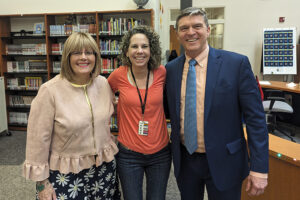
Home — Essay Samples — Geography & Travel — Travel and Tourism Industry — The History of Moscow City
The History of Moscow City
- Categories: Russia Travel and Tourism Industry
About this sample

Words: 614 |
Published: Feb 12, 2019
Words: 614 | Page: 1 | 4 min read

Cite this Essay
Let us write you an essay from scratch
- 450+ experts on 30 subjects ready to help
- Custom essay delivered in as few as 3 hours
Get high-quality help

Dr. Heisenberg
Verified writer
- Expert in: Geography & Travel

+ 120 experts online
By clicking “Check Writers’ Offers”, you agree to our terms of service and privacy policy . We’ll occasionally send you promo and account related email
No need to pay just yet!
Related Essays
6 pages / 2662 words
6 pages / 3010 words
2 pages / 1057 words
4 pages / 2143 words
Remember! This is just a sample.
You can get your custom paper by one of our expert writers.
121 writers online
Still can’t find what you need?
Browse our vast selection of original essay samples, each expertly formatted and styled
Related Essays on Travel and Tourism Industry
Travelling is a topic that has been debated for centuries, with some arguing that it is a waste of time and money, while others believe that it is an essential part of life. In this essay, I will argue that travelling is not [...]
Travelling has always been an exhilarating experience for me, and my recent trip to Rome was no exception. The ancient city, with its rich history and breathtaking architecture, left a lasting impression on me. It was a journey [...]
Traveling is an enriching experience that allows individuals to explore new cultures, meet people from different backgrounds, and broaden their perspectives. In the summer of 2019, I had the opportunity to embark on an amazing [...]
Traveling has always been a significant part of my life. From a young age, I have been fortunate enough to explore different cultures, experience new traditions, and immerse myself in the beauty of our world. My passion for [...]
When planning a business trip all aspects and decisions rely heavily on the budget set by the company for the trip. Once Sandfords have confirmed the location careful consideration should be used to choose the travel method and [...]
Place is one of the most complicated issues in geographical studies. Place refers to both sides of human and physical geography. There is not clear understand about the place and sometimes refer to local, area, point, region, [...]
Related Topics
By clicking “Send”, you agree to our Terms of service and Privacy statement . We will occasionally send you account related emails.
Where do you want us to send this sample?
By clicking “Continue”, you agree to our terms of service and privacy policy.
Be careful. This essay is not unique
This essay was donated by a student and is likely to have been used and submitted before
Download this Sample
Free samples may contain mistakes and not unique parts
Sorry, we could not paraphrase this essay. Our professional writers can rewrite it and get you a unique paper.
Please check your inbox.
We can write you a custom essay that will follow your exact instructions and meet the deadlines. Let's fix your grades together!
Get Your Personalized Essay in 3 Hours or Less!
We use cookies to personalyze your web-site experience. By continuing we’ll assume you board with our cookie policy .
- Instructions Followed To The Letter
- Deadlines Met At Every Stage
- Unique And Plagiarism Free
- CBSSports.com
- Fanatics Sportsbook
- CBS Sports Home
- Masters Live
- Champions League
- Motor Sports
- High School
- Horse Racing
Men's Brackets
Women's Brackets
Fantasy Baseball
Fantasy football, football pick'em, college pick'em, fantasy basketball, fantasy hockey, franchise games, the masters.
- CBS Sports HQ
- CBS Sports Golazo Network
- PGA Tour on CBS
- UEFA Champions League
- UEFA Europa League
- Italian Serie A
- Watch CBS Sports Network
- TV Shows & Listings
The Early Edge
A Daily SportsLine Betting Podcast
With the First Pick
NFL Draft is coming up!
- Podcasts Home
- The First Cut Golf
- Beyond the Arc
- Eye On College Basketball
- NFL Pick Six
- Cover 3 College Football
- Fantasy Football Today
- My Teams Organize / See All Teams Help Account Settings Log Out
USC DT Bear Alexander denies report of transfer portal entry with social media message
Multiple outlets reported the trojans defensive lineman planned to the transfer portal when it opens.
USC defensive tackle Bear Alexander has denied multiple reports that he will the transfer portal when it opens next week. The 6-foot-3, 313-pound Alexander took to social media Wednesday to seemingly reaffirm his commitment to the Trojans.
"I'm not crystal clear on all of the noise or what any of this portal mess is about," Alexander wrote. "I'm here to finish what I started and that's chasing a natty here at USC with my teammates."
Multiple outlets reported that Alexander would enter the portal Tuesday and the USC standout even reposted one of the reports to his social media, seemingly confirming the news.
The Texas native is no stranger to moving. Alexander enrolled at three different public high schools in Texas before finally landing at IMG Academy as a senior. He was a highly recruited player and eventually chose Georgia, where he was viewed by many as the future on the Bulldogs' interior defensive line. Instead, he transferred to USC to help revamp the Trojans' lackluster defense.
He emerged as an impact player as a sophomore with 48 tackles, 6.5 tackles for loss and 1.5 sacks and was one of the few bright spots on a struggling USC defense during a disappointing 8-5 campaign. His return would be a major boon for the Trojans as they attempt to bolster that side of the ball under new defensive coordinator D'Anton Lynn.
Our Latest College Football Stories
What to expect from Alabama's first A-Day under DeBoer
Chip patterson • 4 min read.
2024 Georgia spring game how to watch, stream
David cobb • 3 min read.
2024 Ohio State spring game how to watch, stream
Shehan jeyarajah • 2 min read.
2024 Alabama spring game how to watch, stream
Will backus • 3 min read.
'Super league' proposal comes with merit, obstacles
Dennis dodd • 9 min read.
Top uncommitted 2025 QB to announce decision on Sunday
Blair angulo • 1 min read, share video.

USC DL Bear Alexander denies transfer portal report

'Super league' proposal has merit, obstacles

Transfer portal superlatives for spring

What to expect from DeBoer's first A-Day
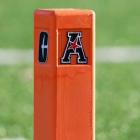
New AAC commish Pernetti focused on innovation

SMU suspends CB for alleged role in Rashee Rice crash

Oregon State RB Damien Martinez to enter portal

Mark Stoops sends farewell message to John Calipari

Washington RB Tybo Rogers charged with rape

More pressure in '24: Ohio State or Georgia?

IMAGES
VIDEO
COMMENTS
A growing body of research has found that school facilities can have a profound impact on both teacher and student outcomes. With respect to teachers, school facilities affect teacher recruitment, retention, commitment, and effort. With respect to students, school facilities affect health, behavior, engagement, learning, and growth in achievement.
School Facilities essay. Free Essays, School. The primary goal of any school is to provide an environment conducive for learning. This would cover the external and internal structure of the school where the atmosphere should be comfortable, secure, safe, accessible, well illuminated, well ventilated, and aesthetically pleasing for both students ...
The 2021 State of Our Schools Report, the leading resource on school facilities data, uses fiscal data to highlight the issues in school facilities. This report found that there is a $85 billion annual school facilities infrastructure funding gap, meaning that, according to industry standards for both capital investment and maintenance, schools ...
As this report will show, the empir - ical argument for investing in learning environment is strong. Furthermore, although causal evidence on this topic is scarce, there is a growing number of non-experimental studies—many of them compiled here—that indicate that investments in quality school infrastructure are strongly associated with Preface
School Facilities. Better Essays. 7024 Words. 29 Pages. Open Document. CHAPTER 1 Introduction The quality of education depends on school facilities and instructional material. It is the process of students learning. The quality of a school's environment and its facilities has a strong influence on students' learning.
Introduction to the problem. Education is one of the substantial investments for most nations, and teachers are one of the biggest professional groups (Monteiro Citation 2014; Harris et al. Citation 2013).School facilities serve as places of learning for children and are proven to have significant effect on education outcomes especially in developing countries (Glewwe et al. Citation 2011).
Annually, the United States spent an average of $56 billion on facilities operations and maintenance, leaving a maintenance and operations gap of $27.6 billion. "Closing these annual funding gaps must be a top priority. We have Title 1 for the classroom. We need a Title 1 for school facilities as well. This will ensure that all public schools ...
Educational facilities and infrastructure are supporting matters that facilitate the teaching and learning process in school. Facilities and infrastructure include school buildings, equipment including teaching aids, books, typewriters, computers and laboratory equipment (Akhihiero, 2011; Herwan, Aswandi, & Chiar, 2018).
In education, as in other institutional systems, decisions about school facilities tend to be made by a few people who are not the direct building users, often ignoring the direct involvement of teachers and students. ... This report describes a national design competition sponsored by the City of Trenton, NJ and the Trenton School District ...
performance. This study described three factors that can impact student's academic achievement, which is System. Management (E-Learning, Management Information System); Learning Environ ment ...
A Right to Play, a school-based programme in Hyderabad, Pakistan, uses sports and games to empower students to reduce violence in school and change gender norms. As of 2018, the programme had reached 8,000 children in 40 public schools and resulted in decreases in peer victimization by 33% among boys and 59% among girls.
Our vision for this Planning Guide for Maintaining School Facilities is to encourage information-based decision-making in this crucial, yet often overlooked, aspect of schools management. Because no two school districts face precisely the same challenges, this Planning Guide does not attempt to provide a single template for an all-inclusive facilities maintenance plan.
The paper examines the relevance of physical facilities in enhancing the level of motivation and the academic performance of senior secondary school students in South West Nigeria. The study adopted ex-post facto design.. The population consists of all senior secondary students in South West Nigeria. The sample for the study include one ...
State School Facilities Capacity Building Tool . ... and standard definitions across states is essential for national analysis and report of facilities-related activities. Download . National Council on School Facilities 1816 12th Street, NW • Washington, DC 20009
Planning Guide Framework. This Planning Guide includes the following chapters and information: . Chapter 1: Introduction to School Facilities Maintenance Planning describes the purpose, scope, intended audience, and organization of this publication.. Chapter 2: Planning for School Facilities Maintenance discusses the vital role that facilities maintenance planning plays in the management of an ...
Facilities- There is a change room in 21st Century Hotel which is a problem in winter. The showers work but the water is greenish and cold. Finally, there is no chlorine in the water so it smells and has algae on the surface. The sauna is equipped with coal but there is no ventilation so get a tan but die of suffocation.
Recommended ways for how to improve school facilities include: Increasing circulation of outdoor air when possible. Ensuring HVAC settings are set to maximize ventilation. Cleaning and/or changing air filters regularly. Confirming kitchen and restroom exhaust fans are working at optimal levels1.
This is certainly an aspect of the evidence on the impact of. "learning zones" (see "Evidence of Holistic Impact of School Spaces on Learning". section in chapter 4). Thus, the quality of ...
This study evaluated the impact of packaged interventions for operation and maintenance (O&M) on the usability and cleanliness of toilets in public schools in the Philippines. In this cluster-randomized controlled trial, the divisions of Roxas City and Passi City were randomly assigned to the intervention or control group. Schools in Roxas City (n = 14) implemented the packaged O&M ...
How the U.S. public views teachers. While the top response from teachers in the open-ended question is that they want the public to know that teaching is a hard job, most Americans already see it that way. Two-thirds of U.S. adults say being a public K-12 teacher is harder than most other jobs, with 33% saying it's a lot harder.
Moscow Online School has generated immediate results: in less than one year after the project launch Moscow authorities have indicated 15% growth of academic progress in the schools participating ...
A population that has better access to medical facilities and a growing life expectancy, 75.8 years in 2012, and a growing natality rate. ... Interesting is the development of the average salary of a school teacher in Moscow, from 39200 roubles in 2010 up to 64100 roubles in 2013: an average annual growth of 12% in a context of an inflation of ...
If your address is outside the Moscow city limits, please call the Superintendent's Office at 208-892-1139 for assistance. While all effort is made to place students within the school they are zoned for, final placement is determined by the Superintendent as needed due to class sizes. Lena Whitmore Elementary School Zone - Grades K-5.
Since then, more than 200 million papers have been reviewed by the detector, predominantly written by high school and college students. Turnitin found that 11 percent may contain AI-written ...
A report from the Department of Health and Human Services' inspector general finds a dire shortage of mental health care providers in Medicaid and Medicare, which together serve some 40% of Americans.
Contact: Adrianna Cruz, [email protected], (414) 251-6502. School of Freshwater Sciences Diversity Equity & Inclusion Great Lakes Research Facility room 1099 & MS Teams, 02:30 pm Purpose of Meeting: to.
The History of Moscow City. Moscow is the capital and largest city of Russia as well as the. It is also the 4th largest city in the world, and is the first in size among all European cities. Moscow was founded in 1147 by Yuri Dolgoruki, a prince of the region. The town lay on important land and water trade routes, and it grew and prospered.
He emerged as an impact player as a sophomore with 48 tackles, 6.5 tackles for loss and 1.5 sacks and was one of the few bright spots on a struggling USC defense during a disappointing 8-5 campaign.